The following case is a crowding case in an young female 28 years old. The intra-oral photograph systematic shows how teeth crowding was higher in the lower arc with an ectopic buccal position of tooth 43 and the shift of the lower middle line thorough the right side.
Initial photograph systematic
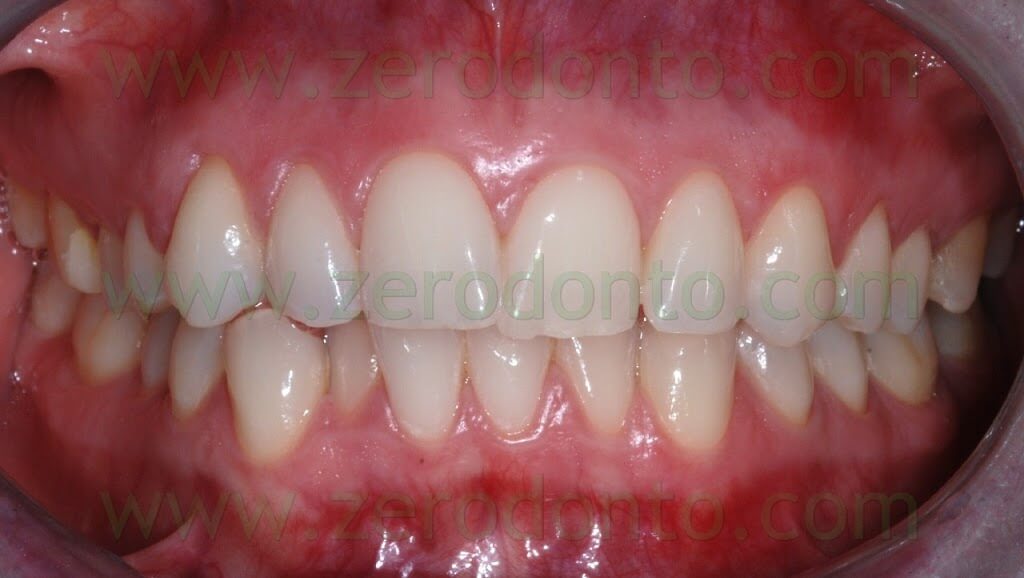
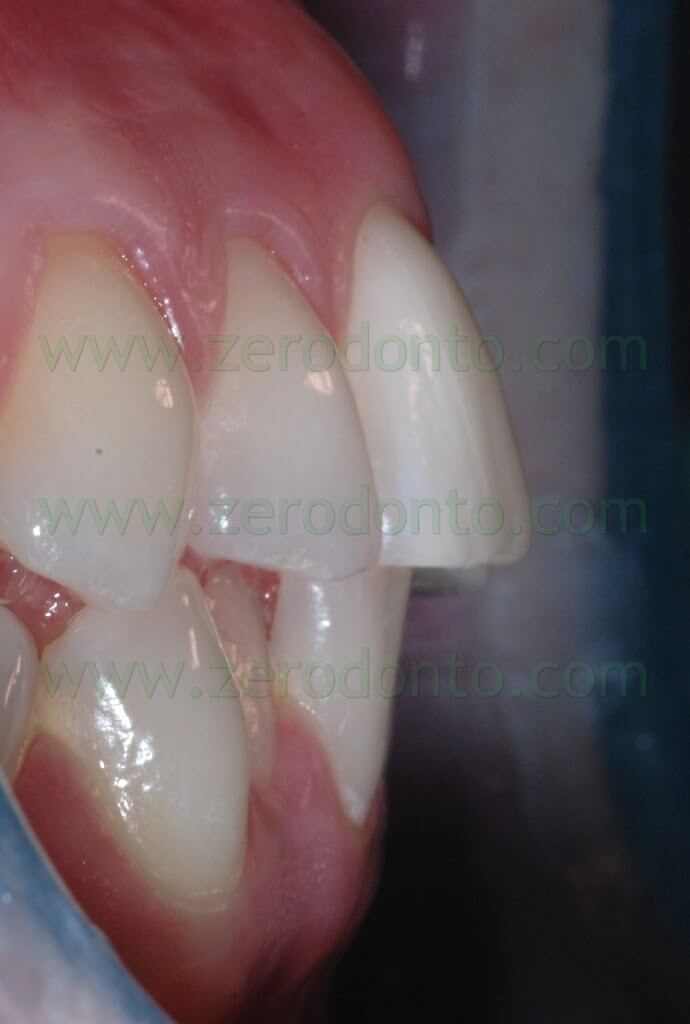
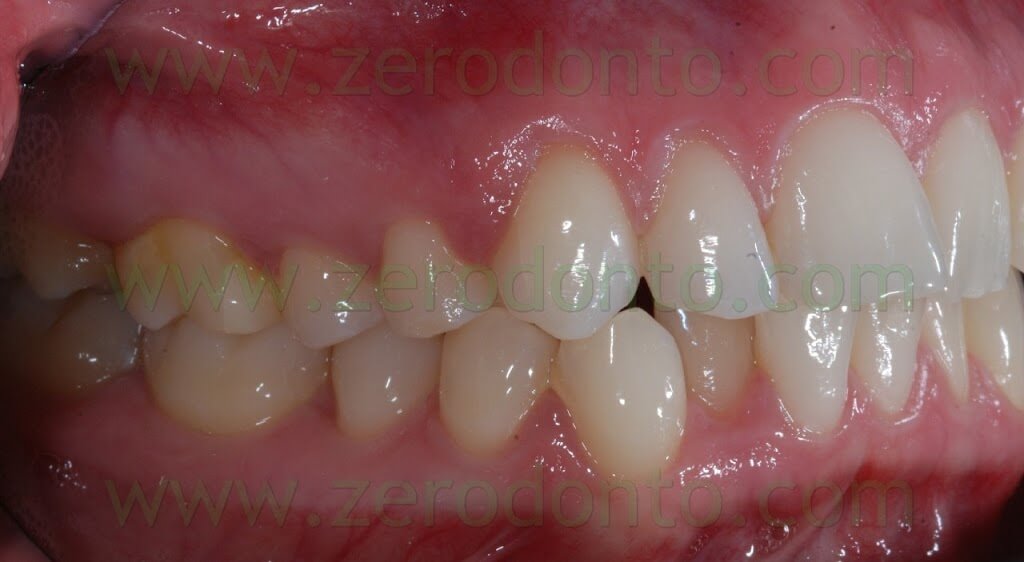
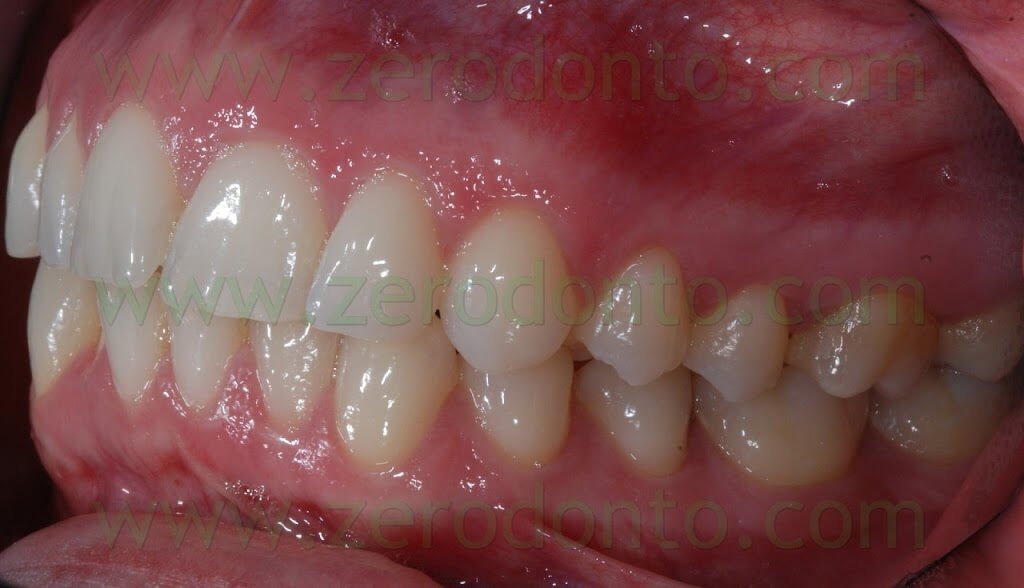
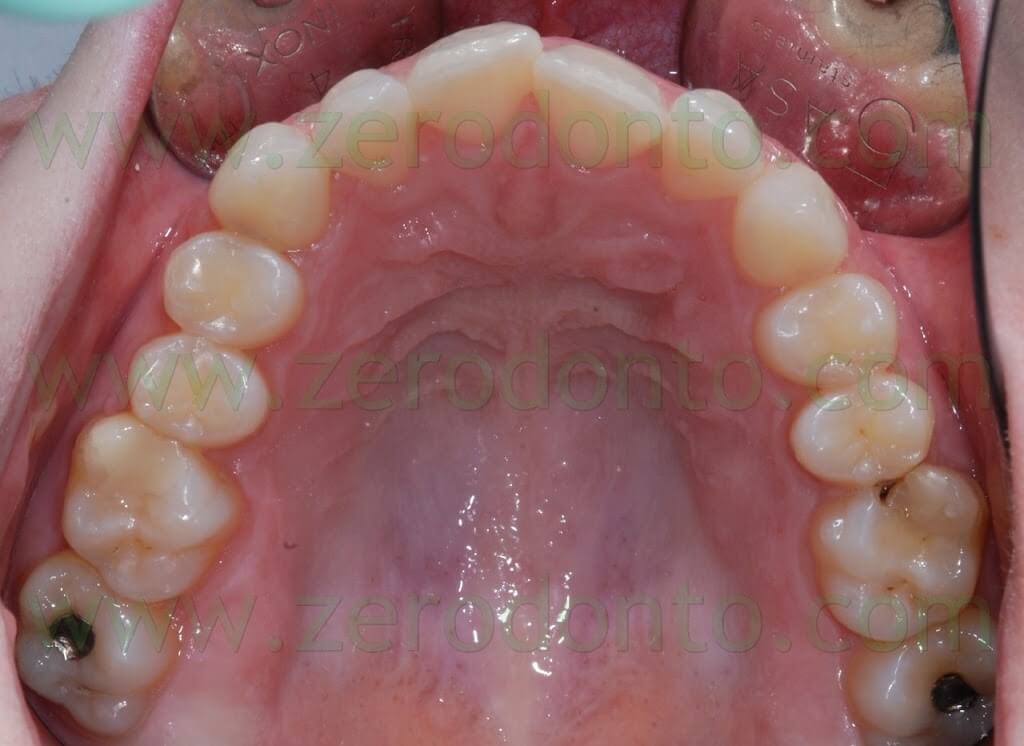
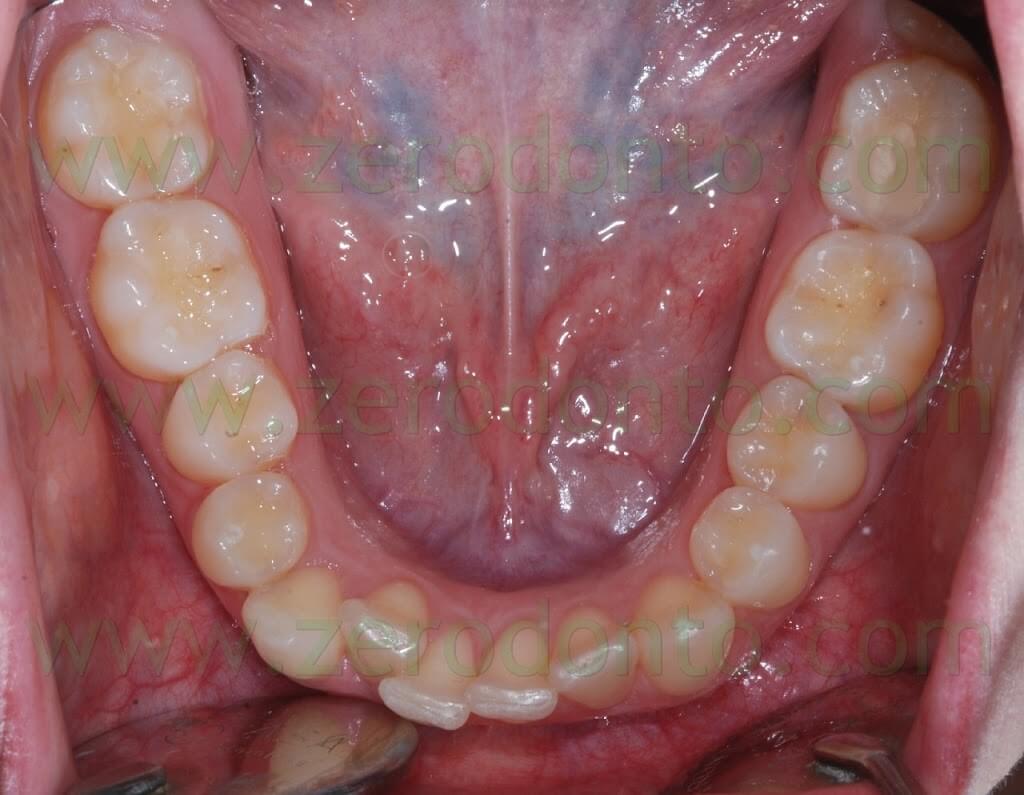
The Ortophantomography of the upper and lower archs shows the presence of all the teeth, except for the upper right third molar.
Ortopantomography
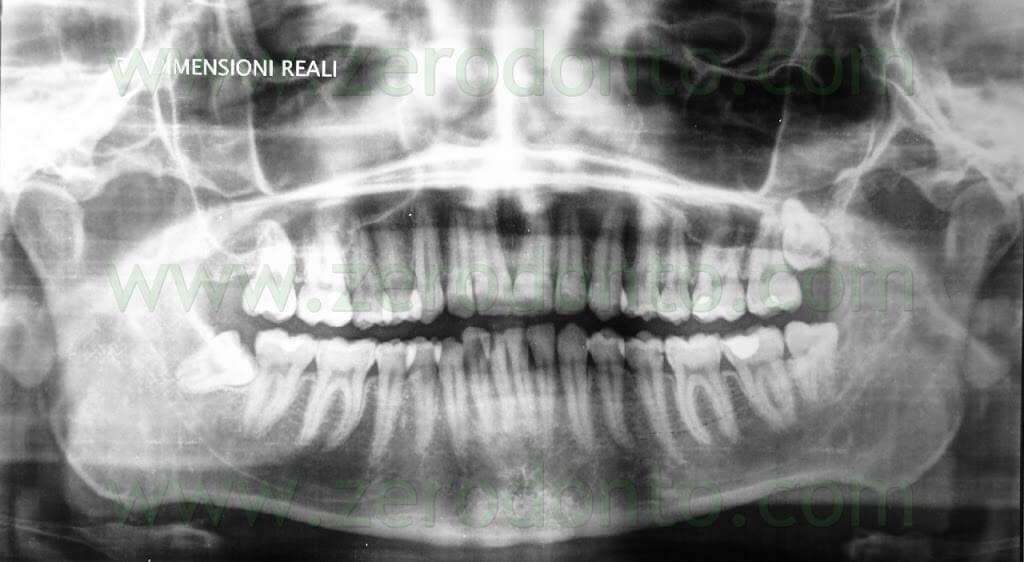
The X-ray lateral skull shows a buccal proclination of the lower teeth.
x-ray lateral skull+ cefalometry
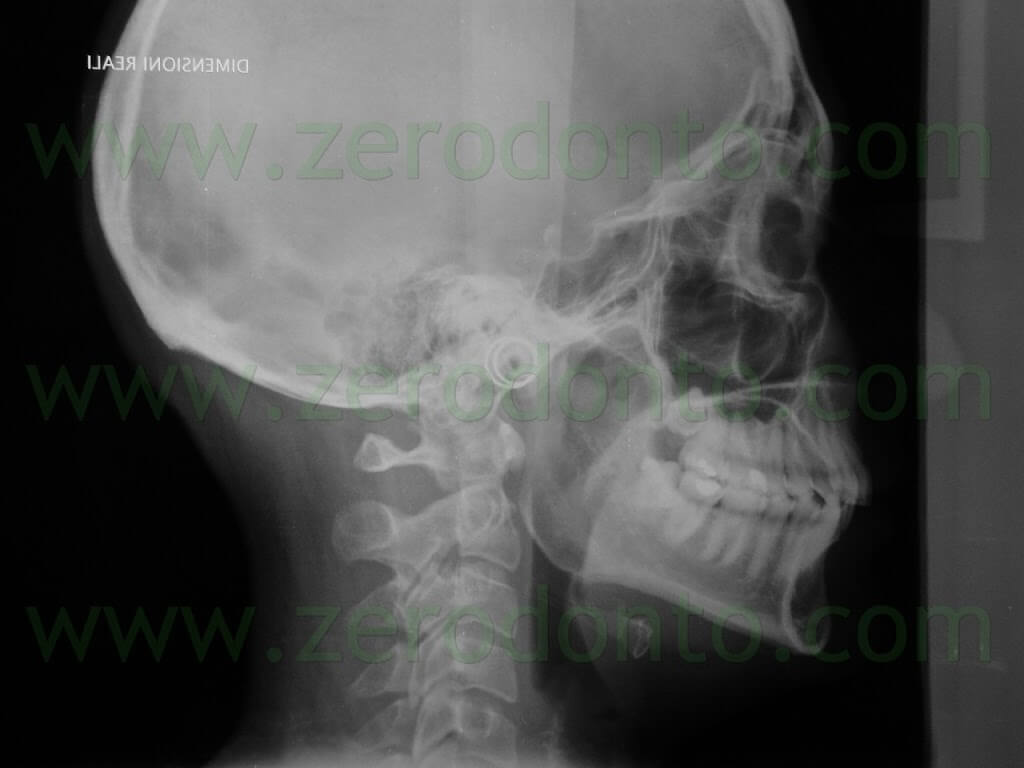
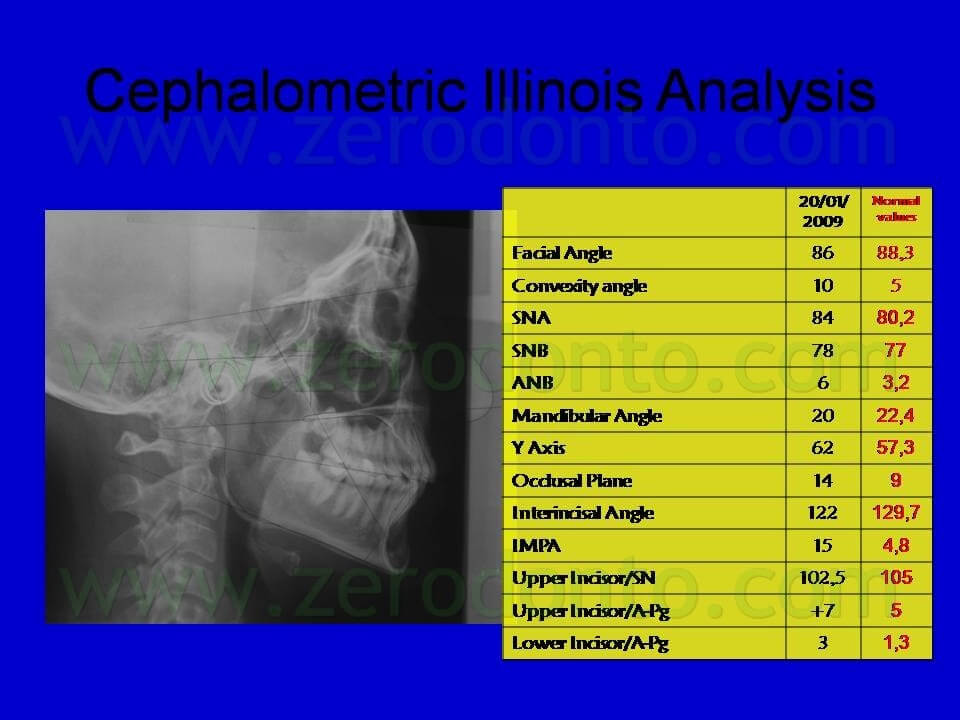
The patient’s request was about an invisible orthodontic and comfortable therapy, without speech alteration and soft tissue pains. Consequently the malocclusion was treated with an invisible lingual orthodontic without brackets by means of .0175 inch multi-strand wires (retainers) directly bonded on the teeth with a flowable resin composite.
These wires were shaped before to be bonded in order to achieve the wished teeth movements (activated retainers). Wires modeling could be performed on the model casts or directly on the patient’s teeth surfaces.
The wires were shaped with first and second order bends, like U loops and inset and offset, with the help of a bird beak plier.
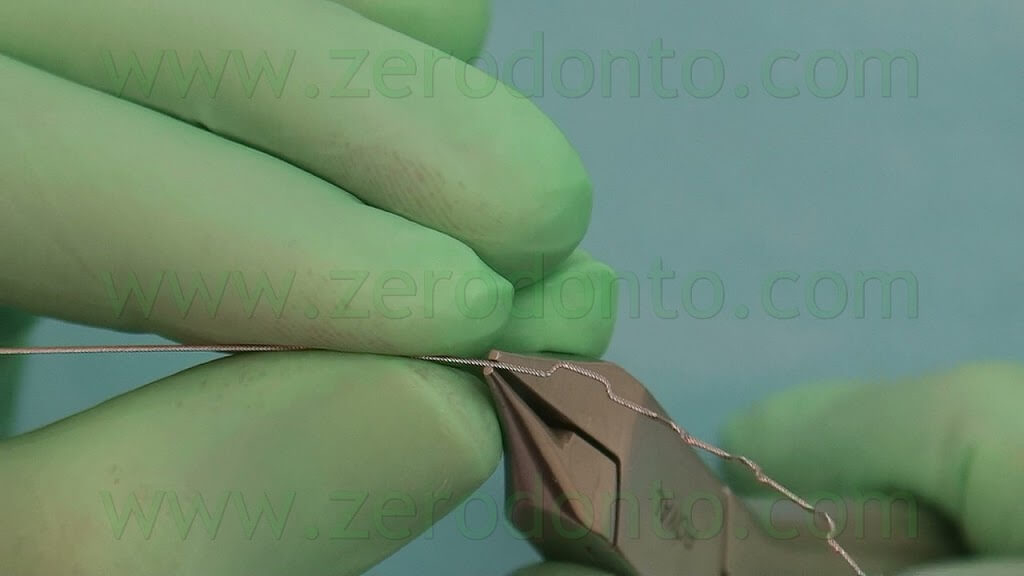
Further activations are accomplished bending them in lingual buccal directions and by opening or closing the second order bends.
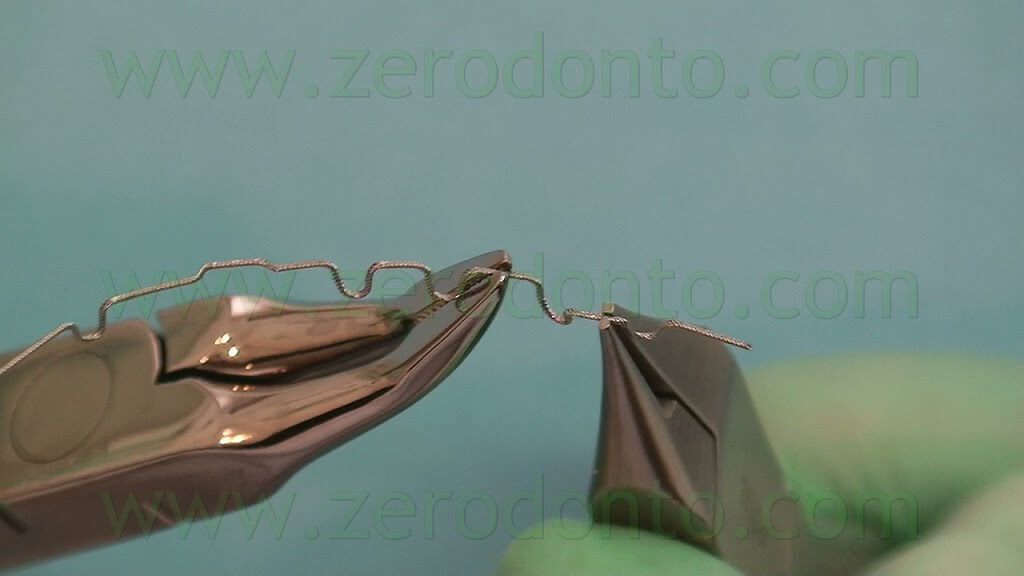
The wires were applied in the upper and lower arch from the first right bicuspid to the first left bicuspid.
After the activations wires length was greater than the involved lingual teeth surfaces. This give the force for the arch expansion.
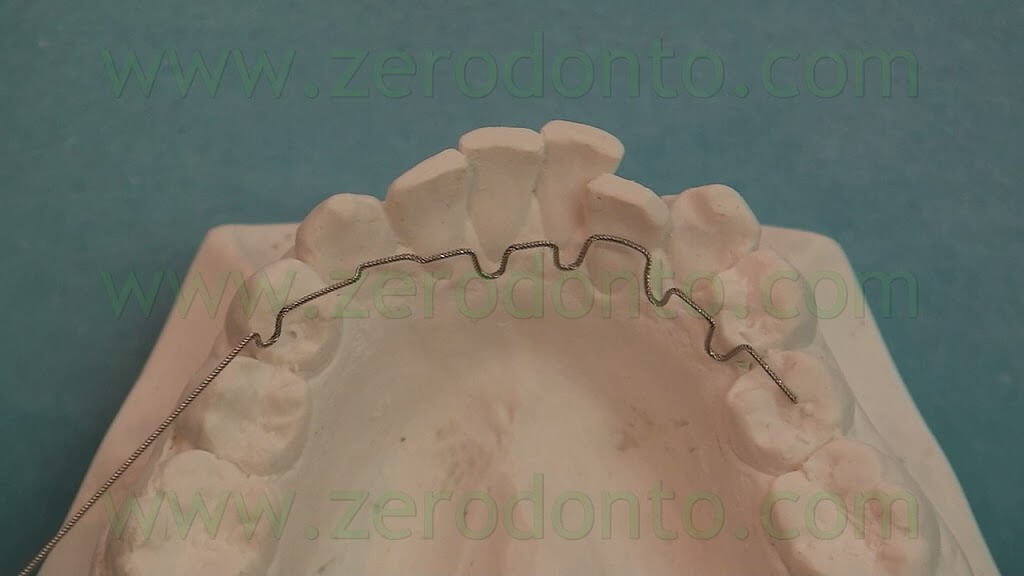
First in the lower arch was accomplished the enamel-interdental reduction.
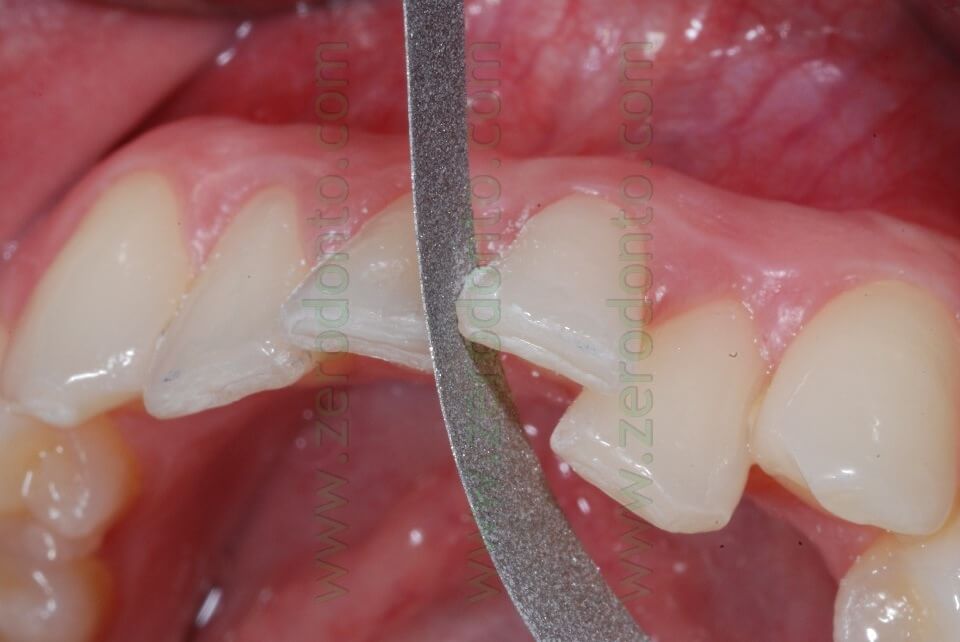
Then the actived retainer wire was applied according to the standard bonding procedure. After cleaning with a low-speed rotary toothbrush and pumice paste lingual dental surfaces were etched for 30 sec with 37 % hydrofluoridic acid.
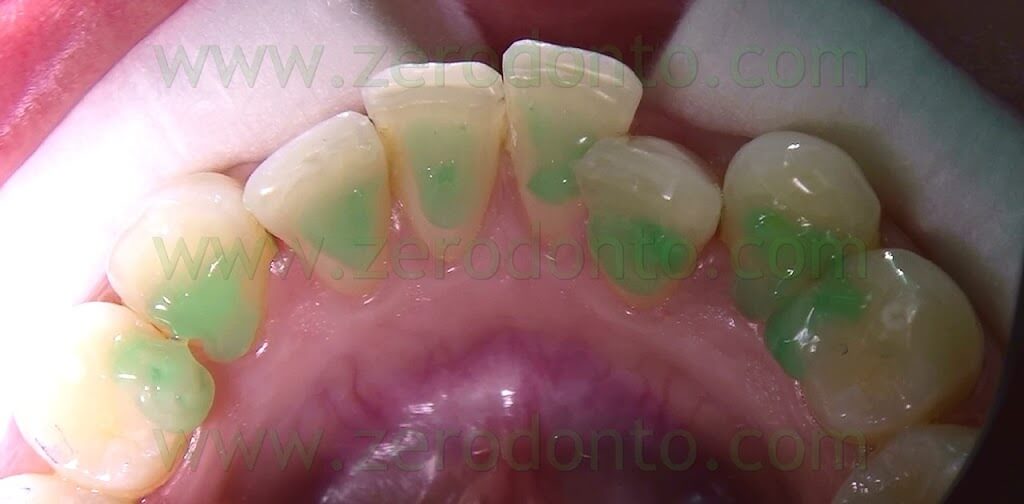
Then the bonding agent was applied and light cured.
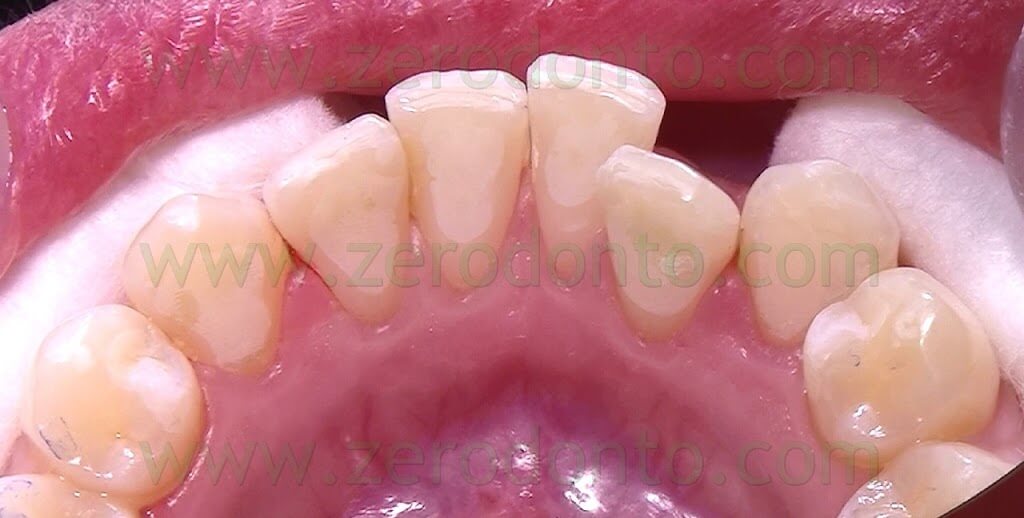
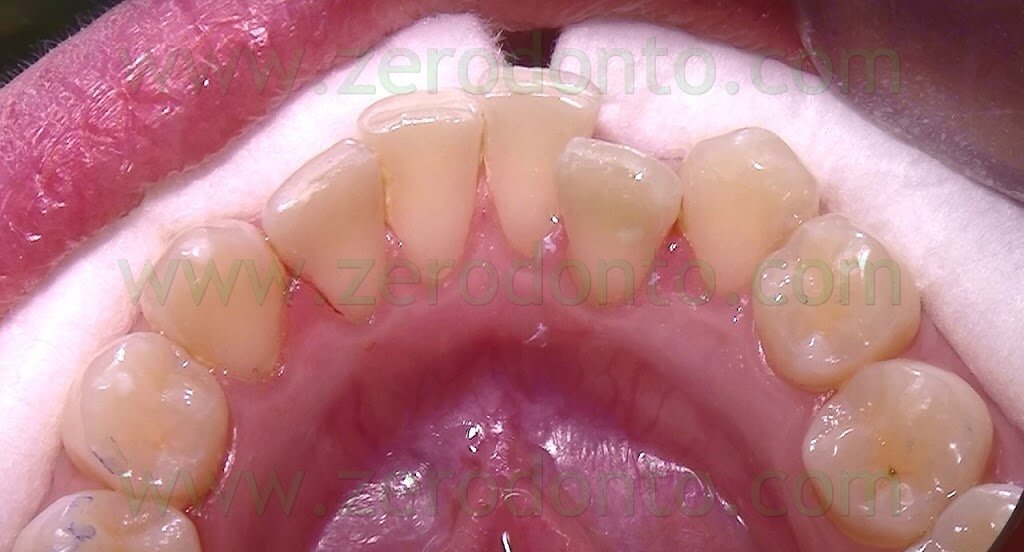
The wire was carried on the teeth by means of a dental plier and was at first bonded on the most lingualized tooth with flowable resin composite.
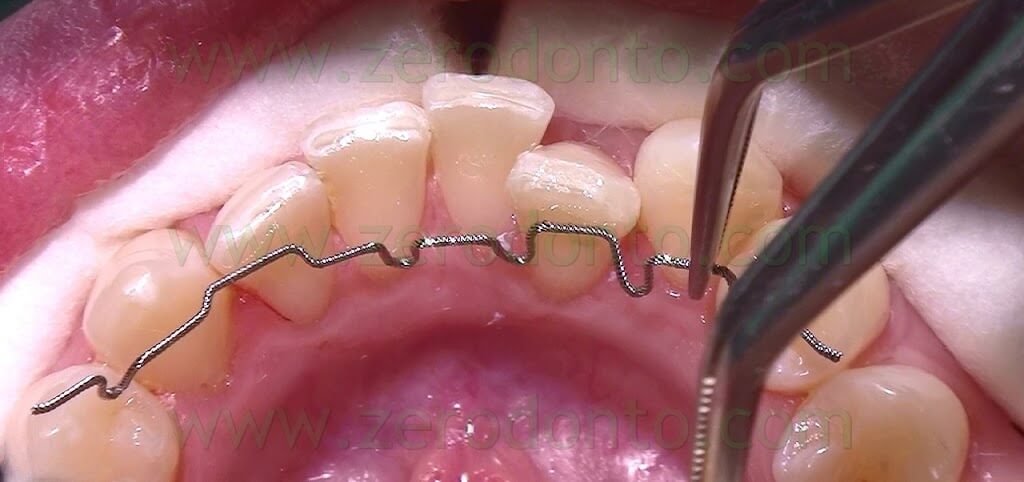
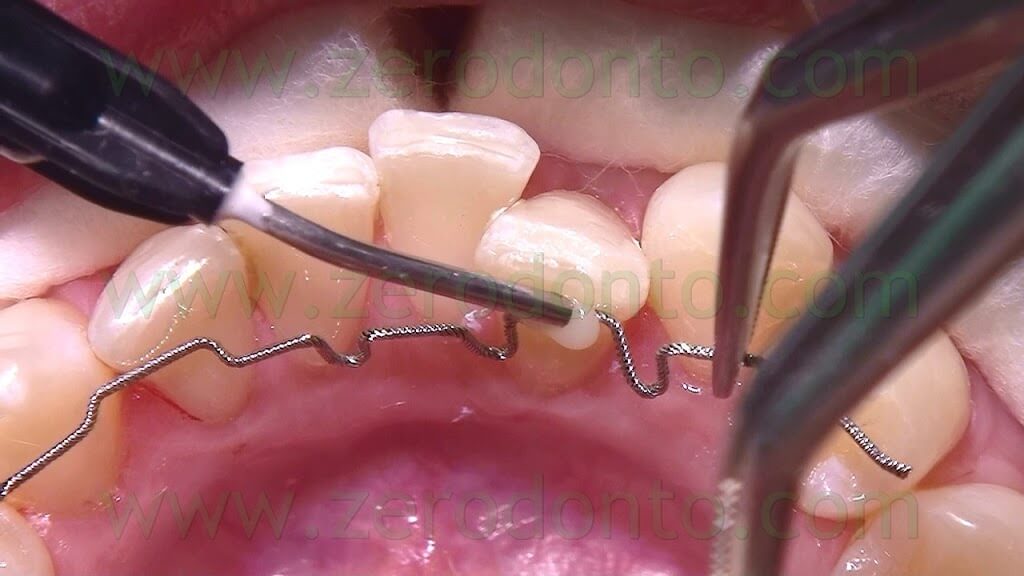
Then was bonded on the other teeth, closing the U-loopos and pushing it on the teeth where it doesn’t passively fit on the lingual surfaces.
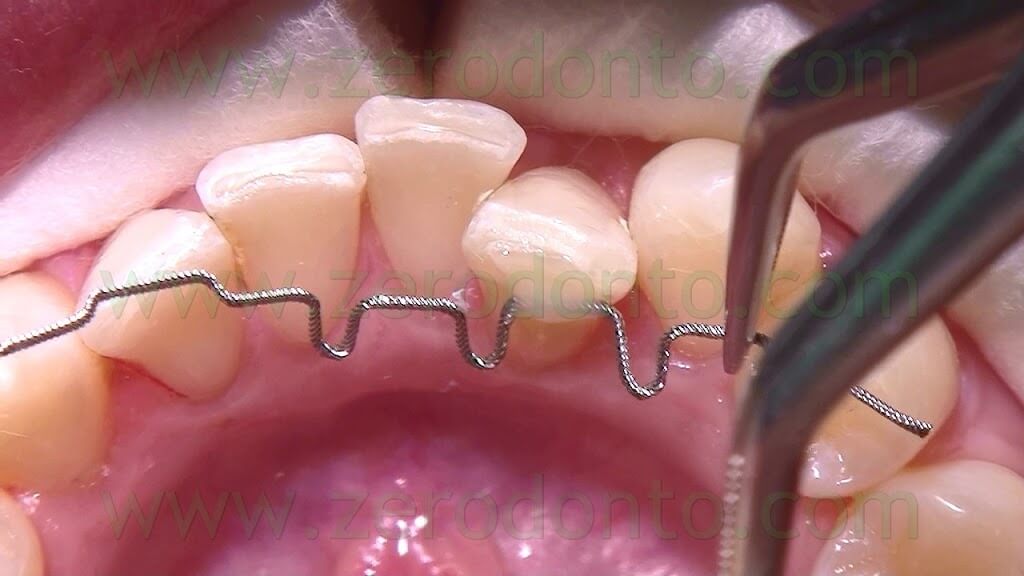
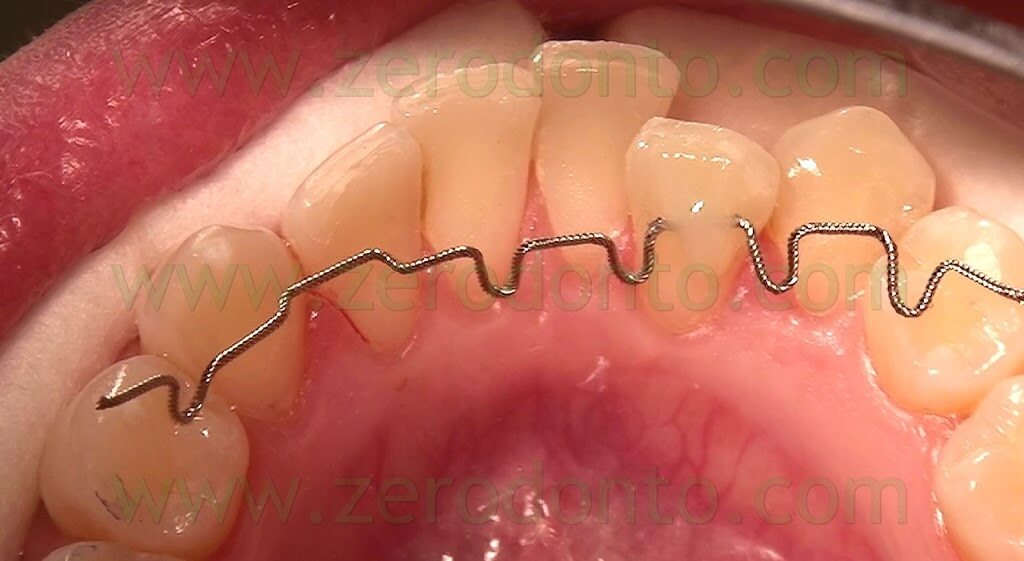
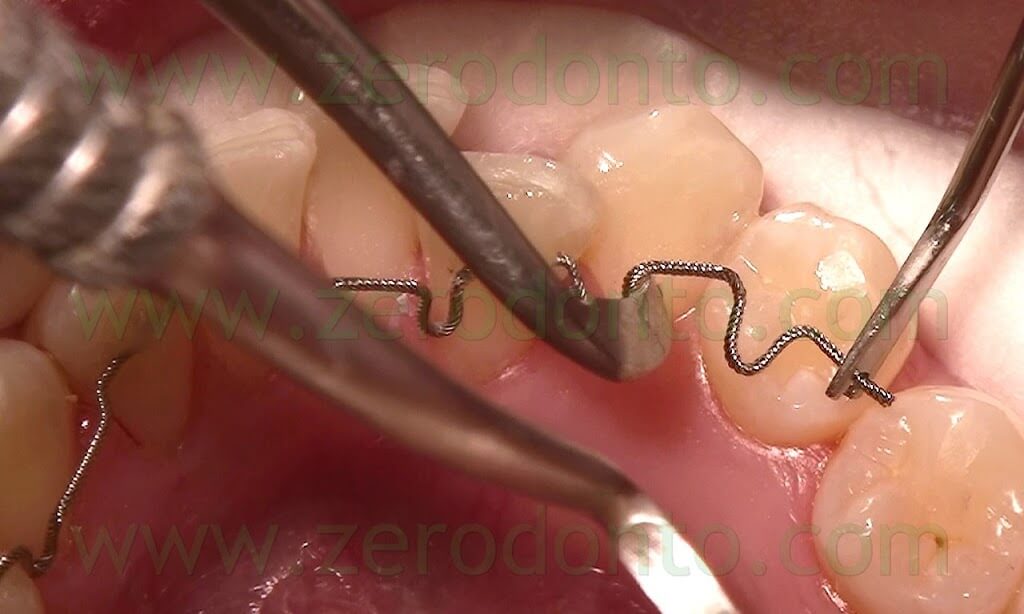
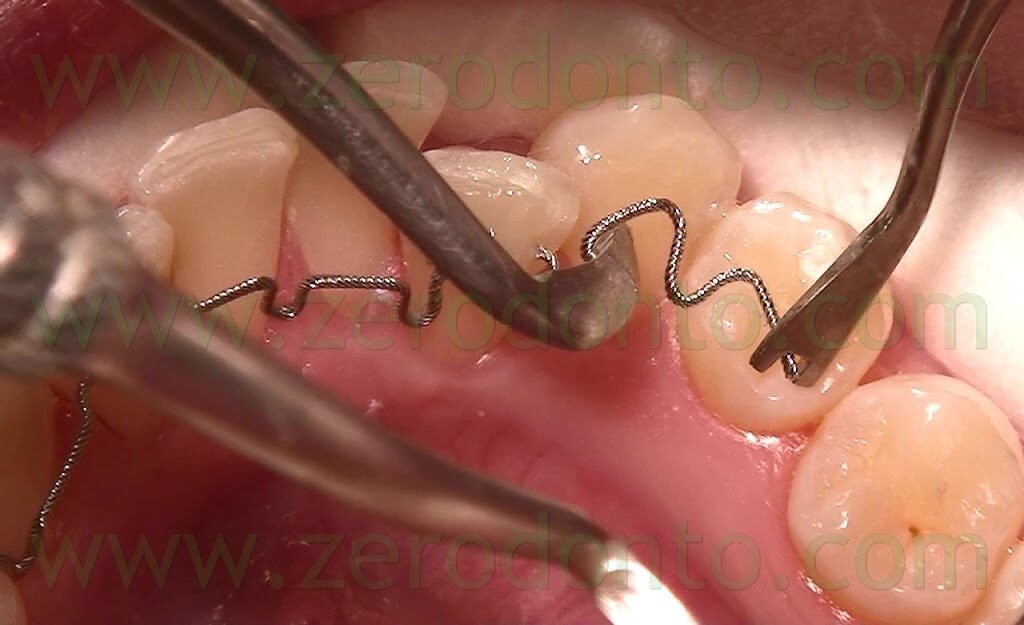
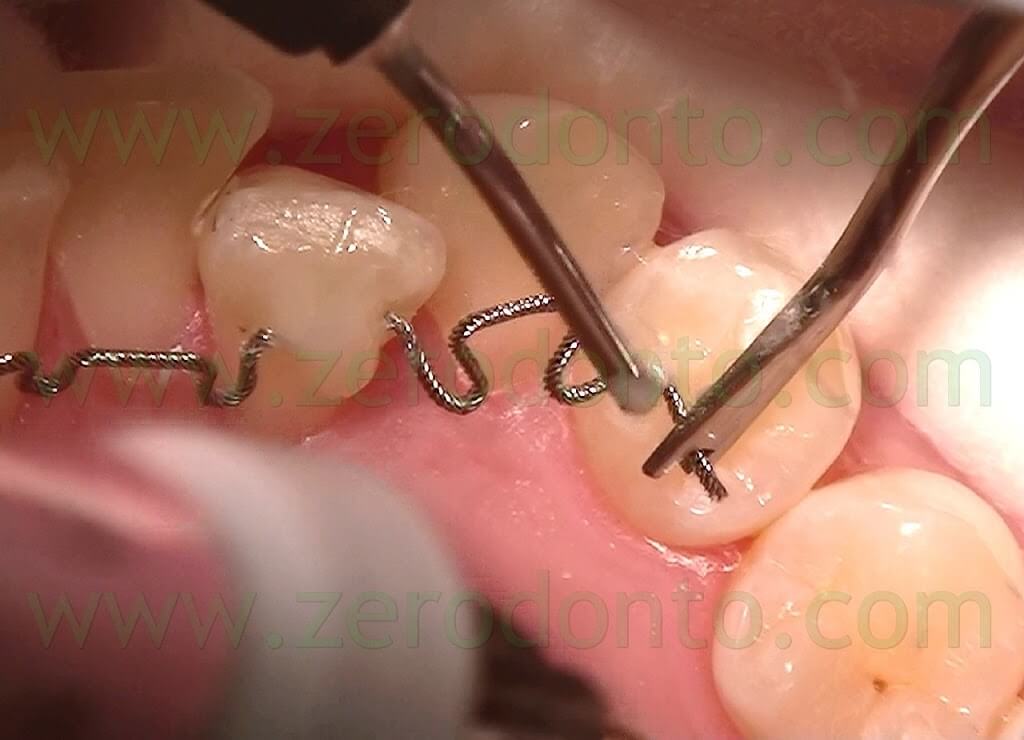
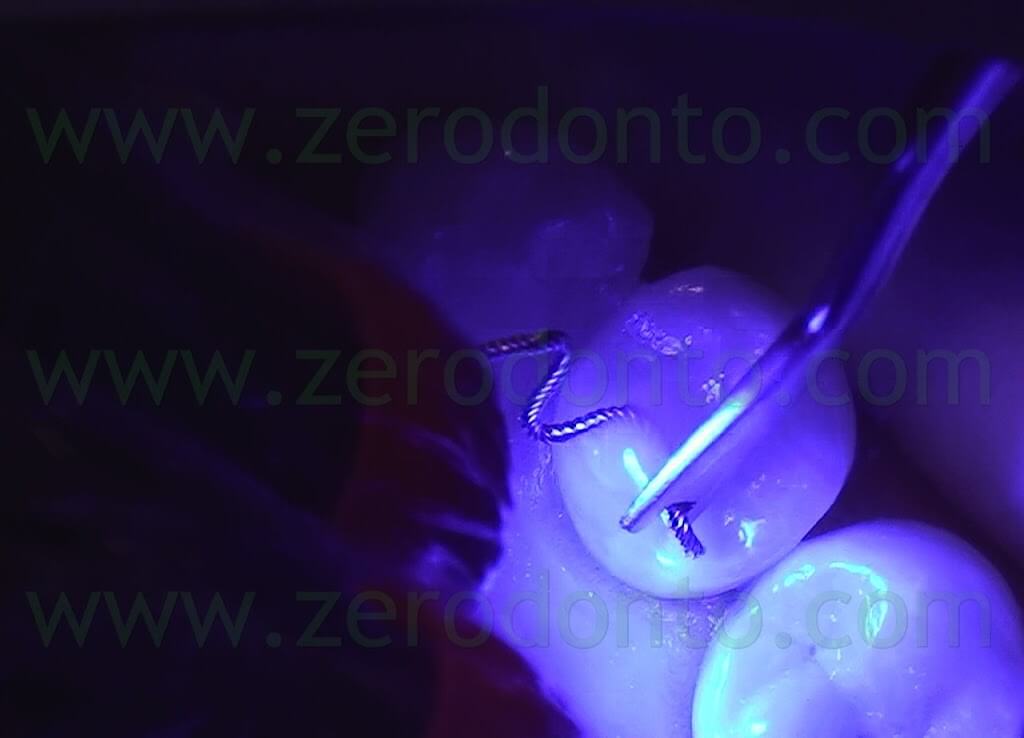
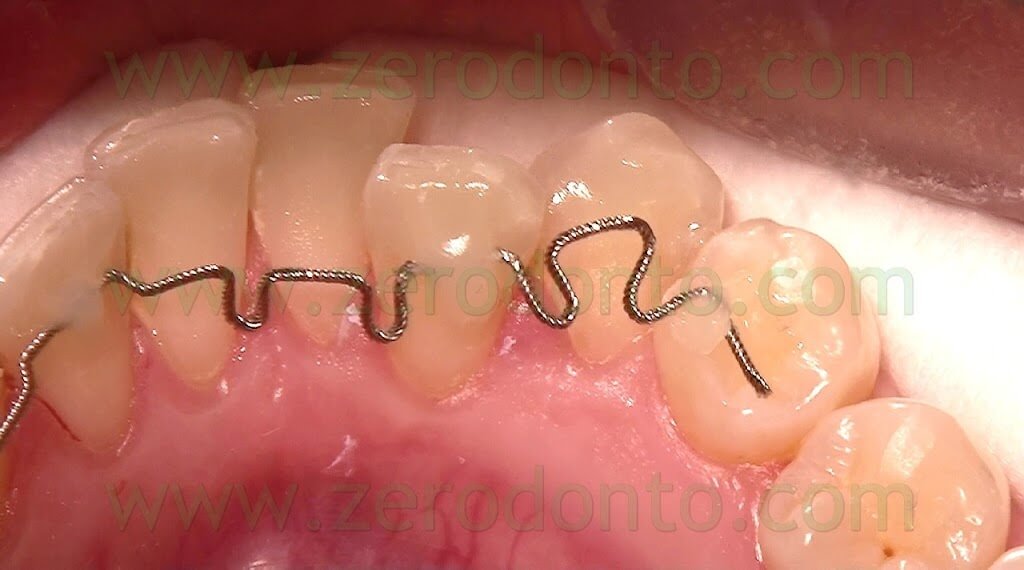
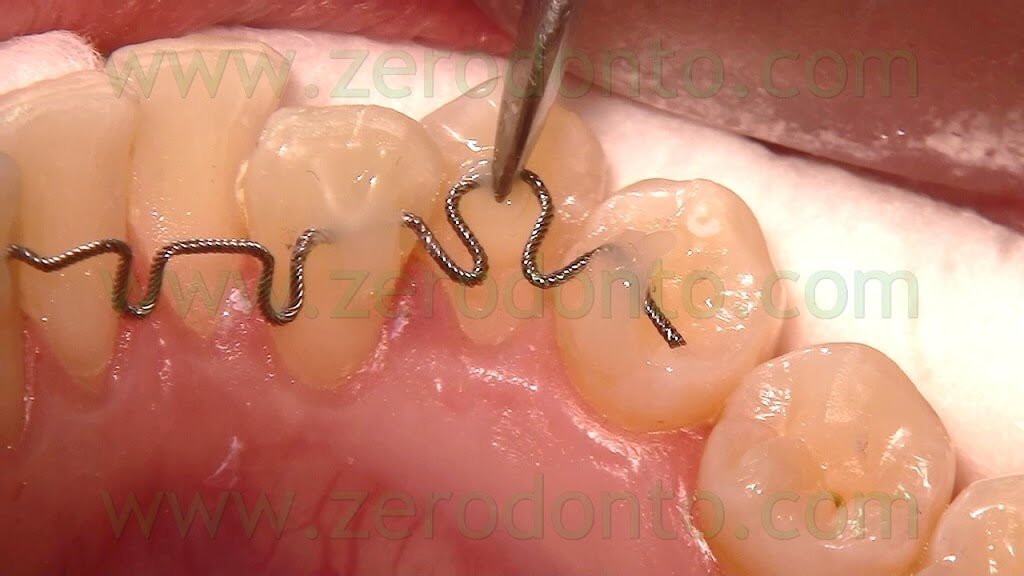
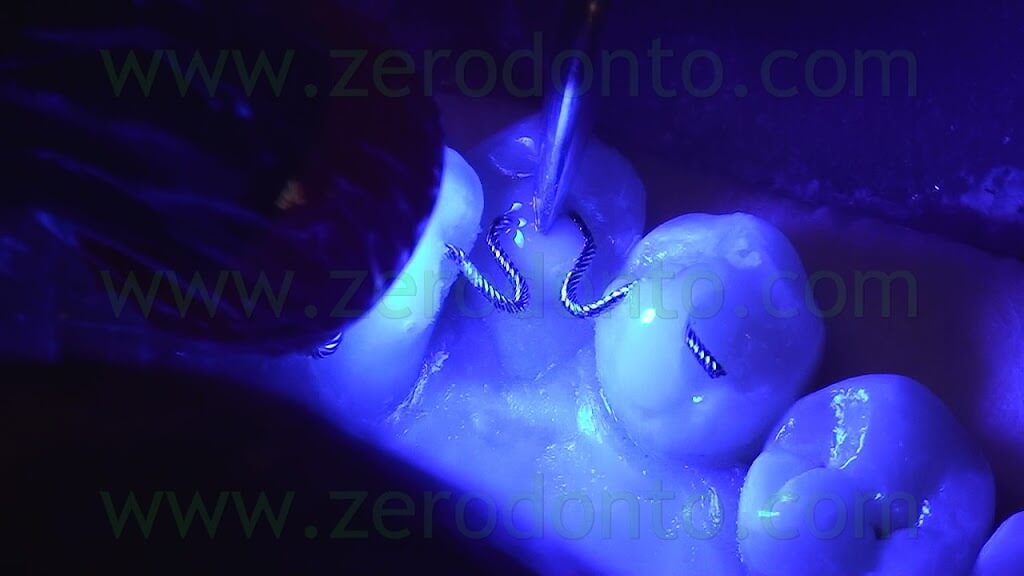
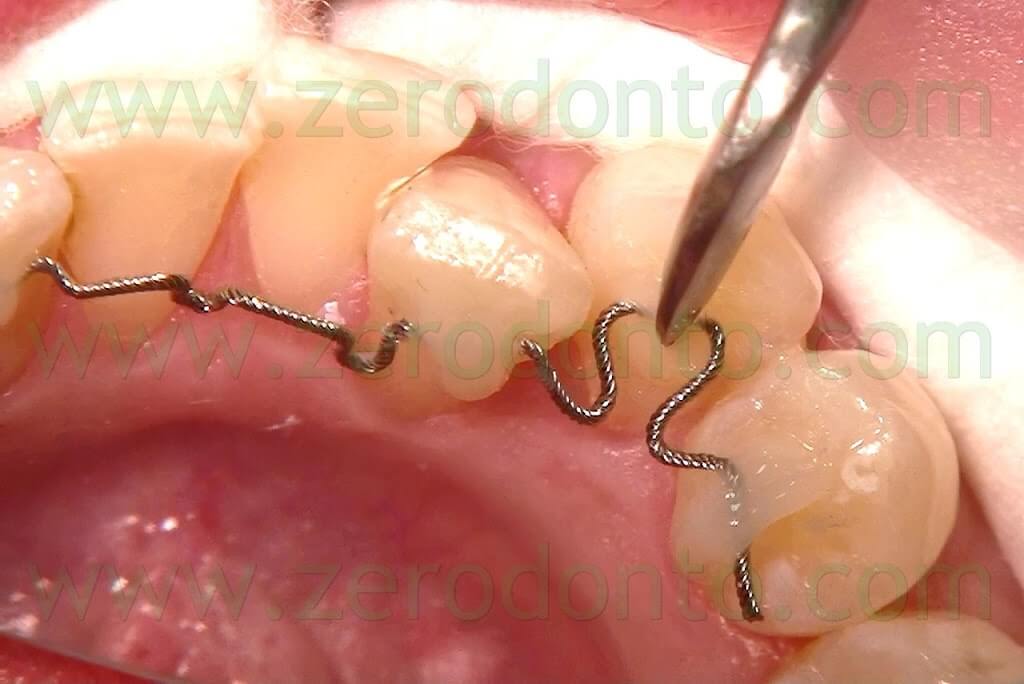
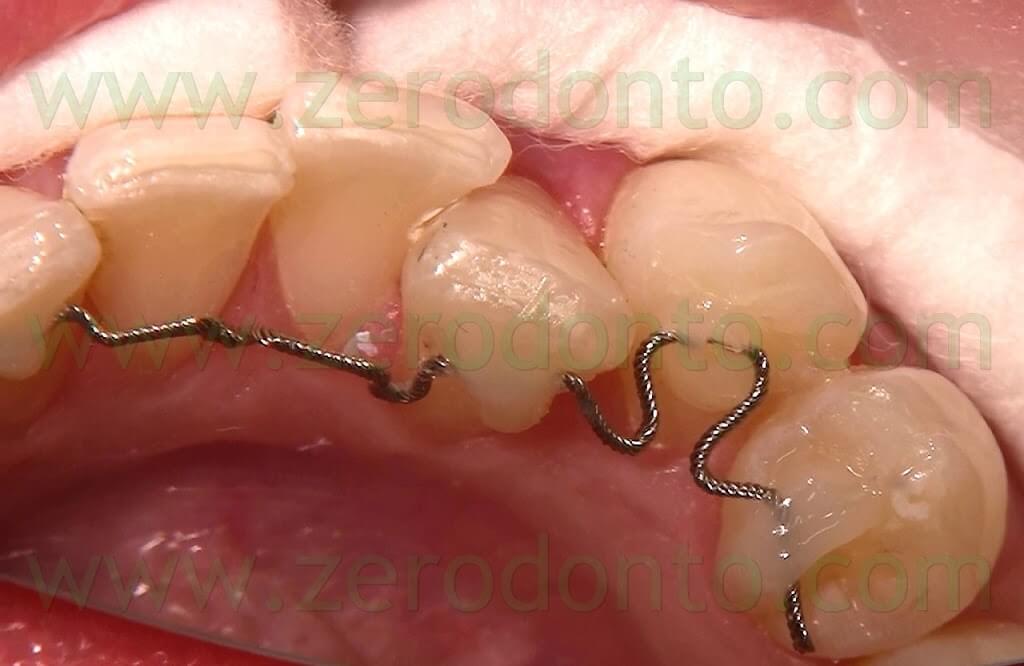
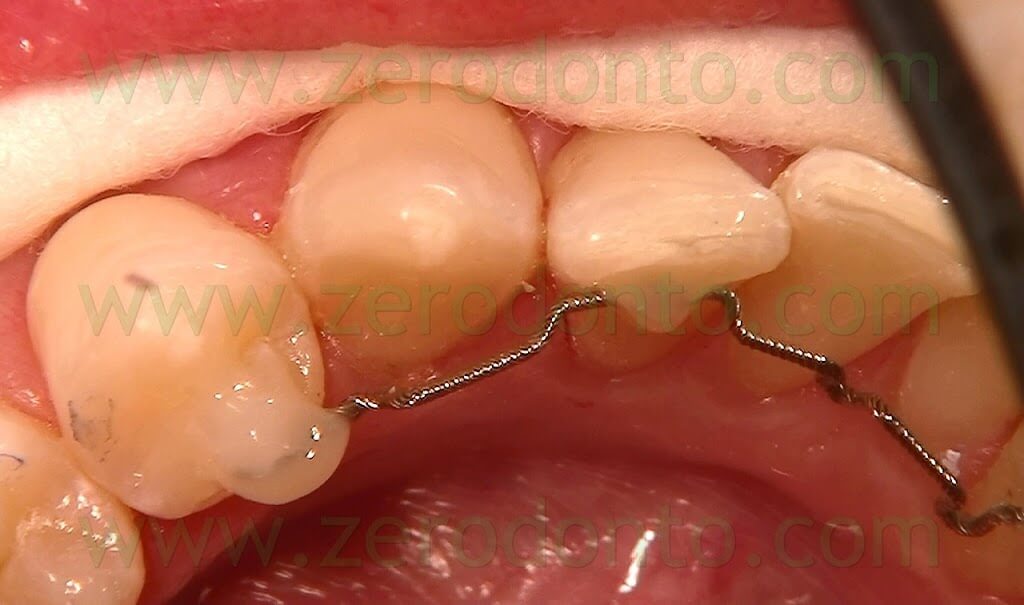
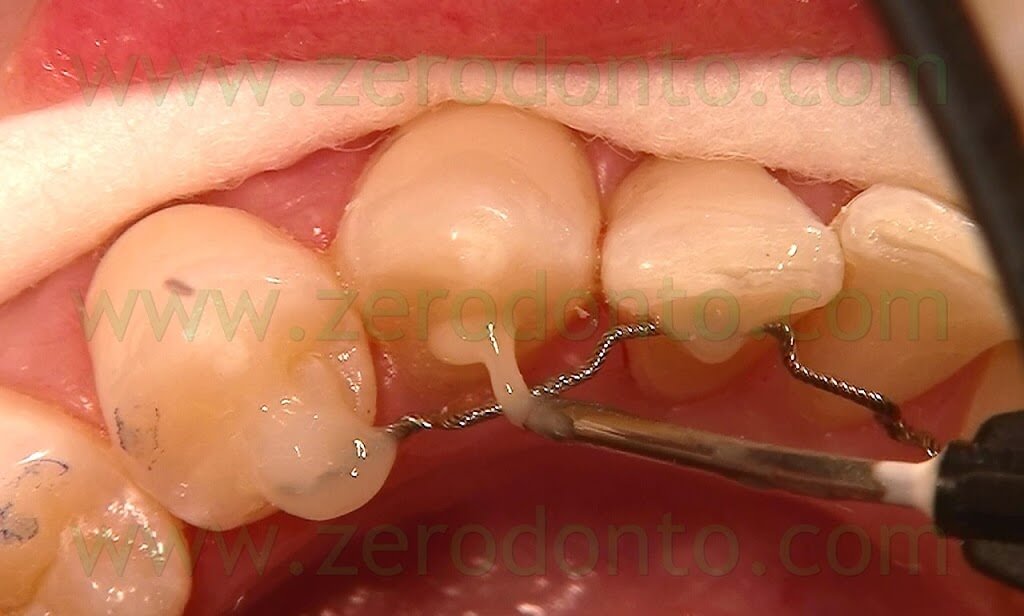
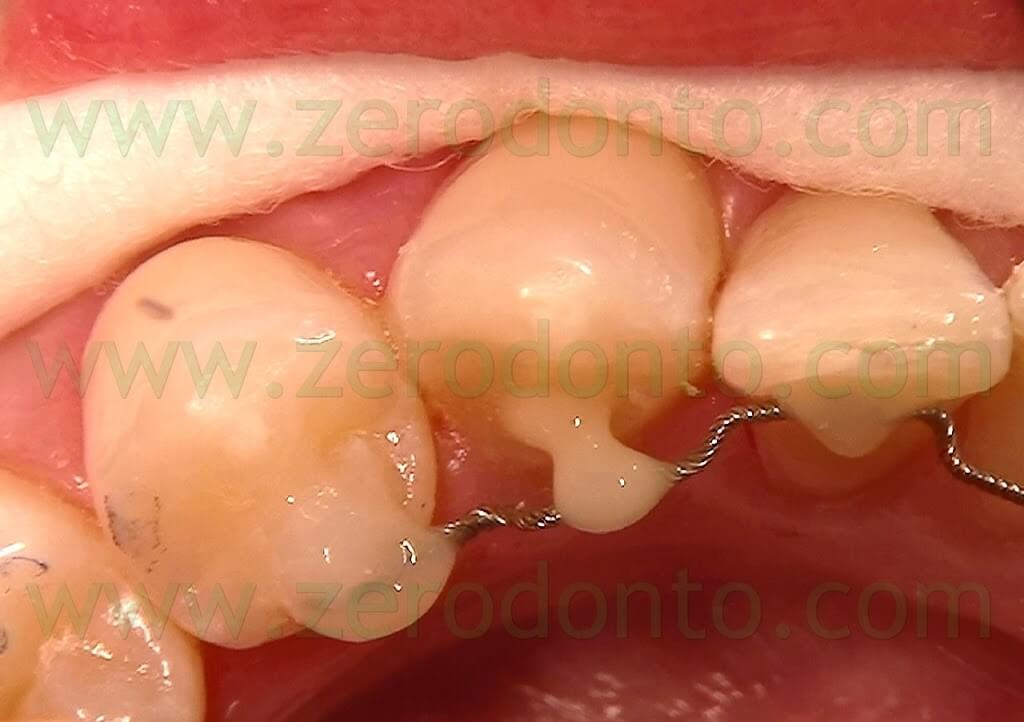
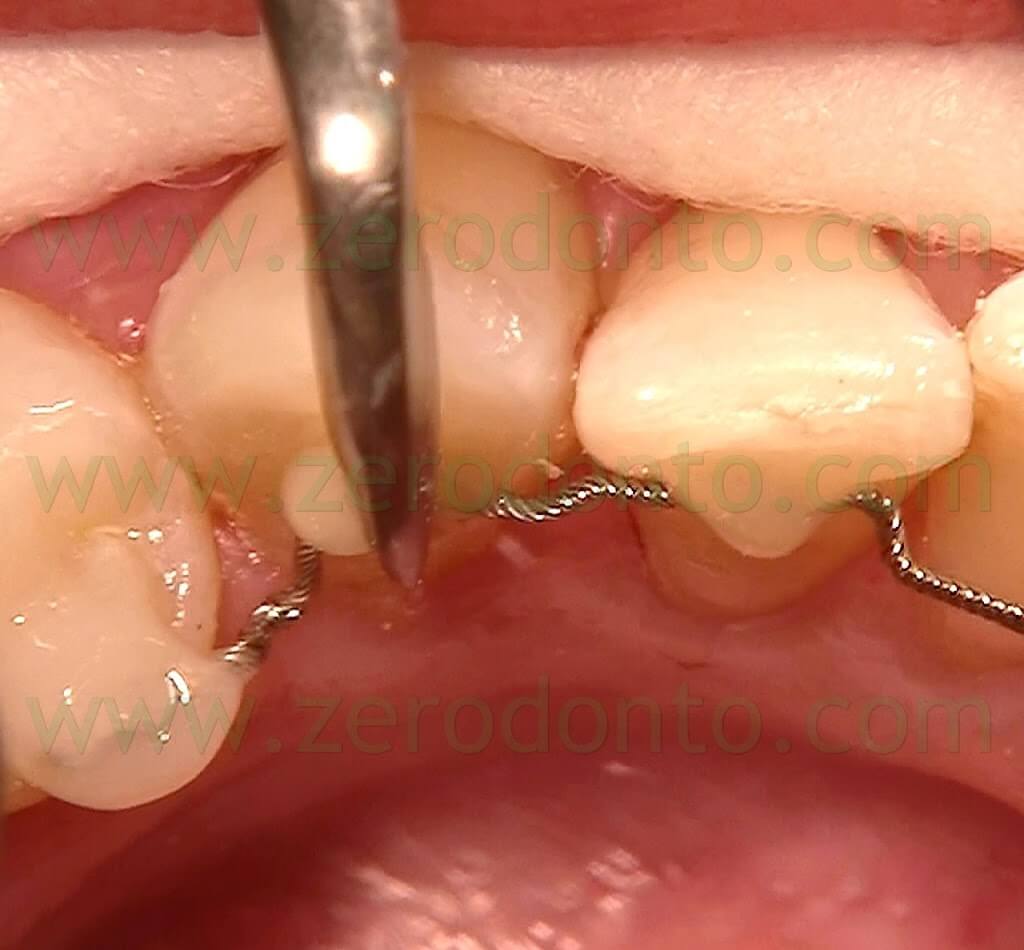
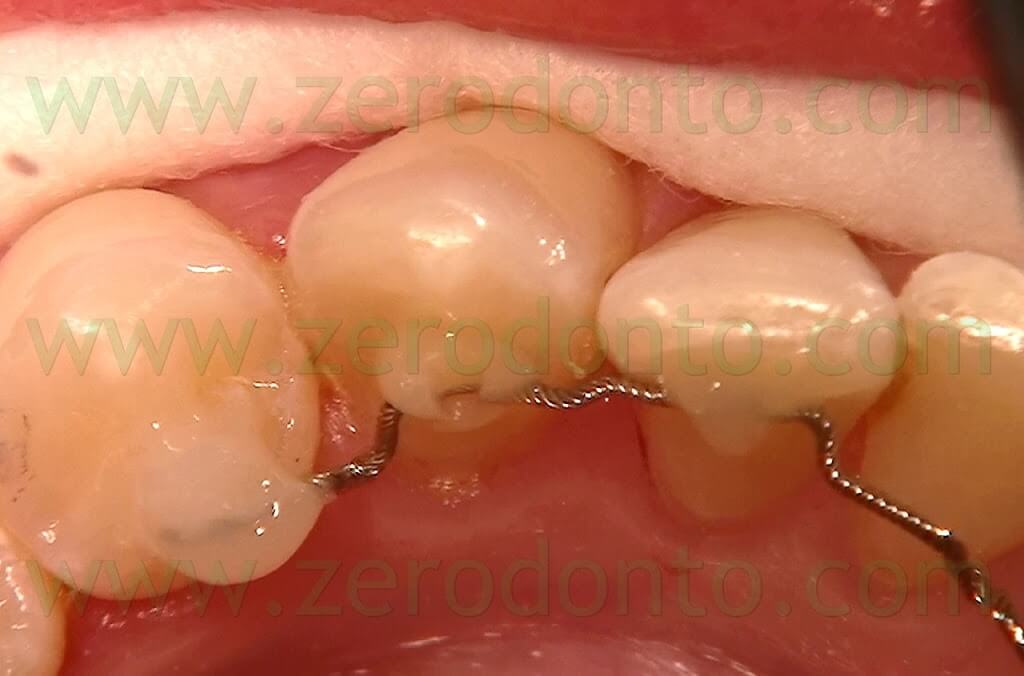
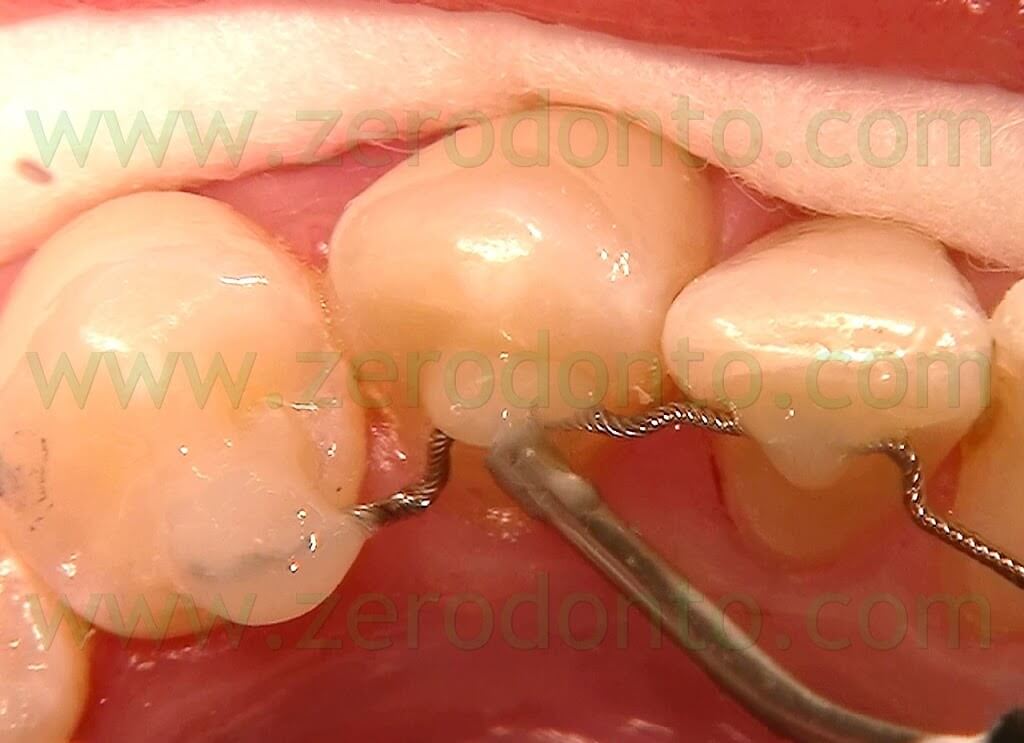
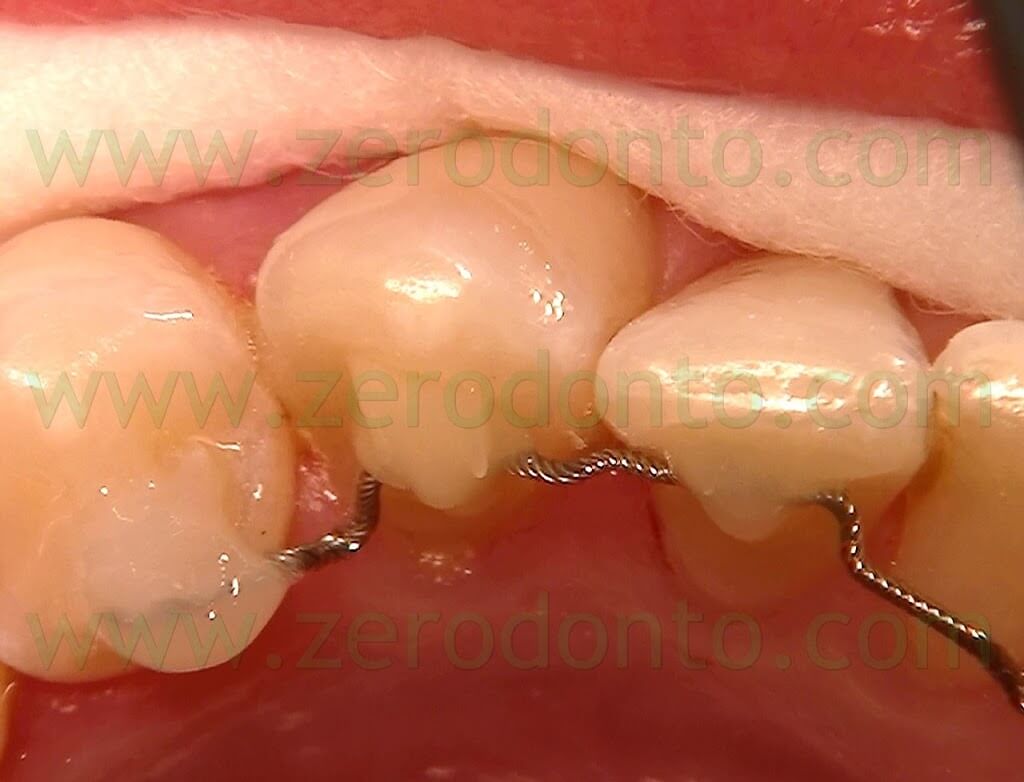
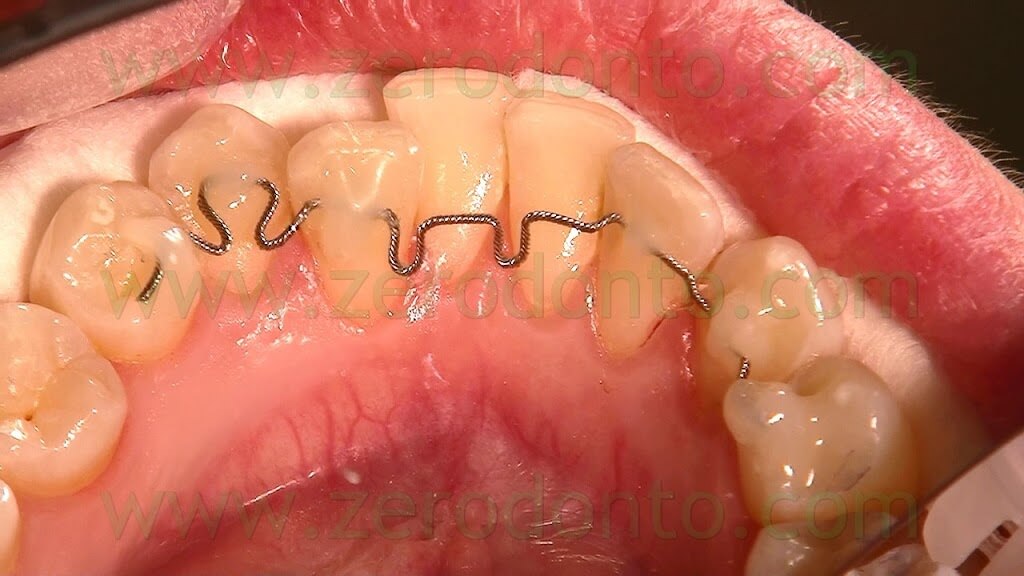
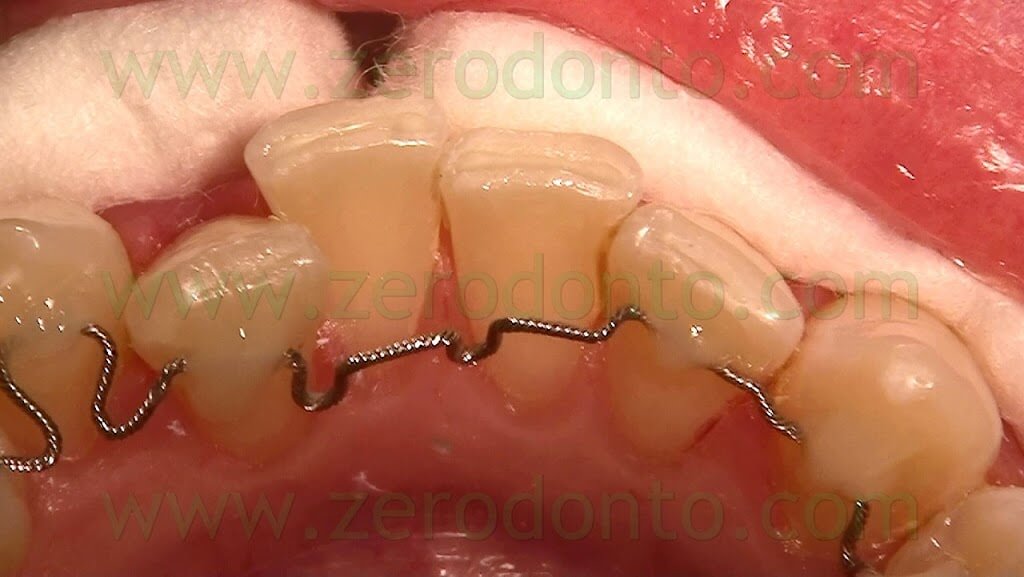
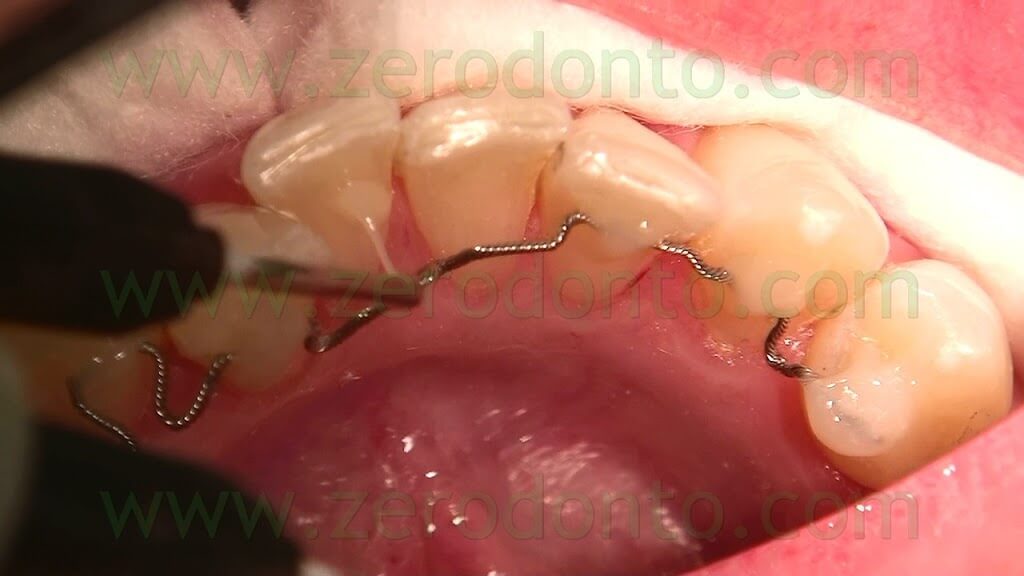
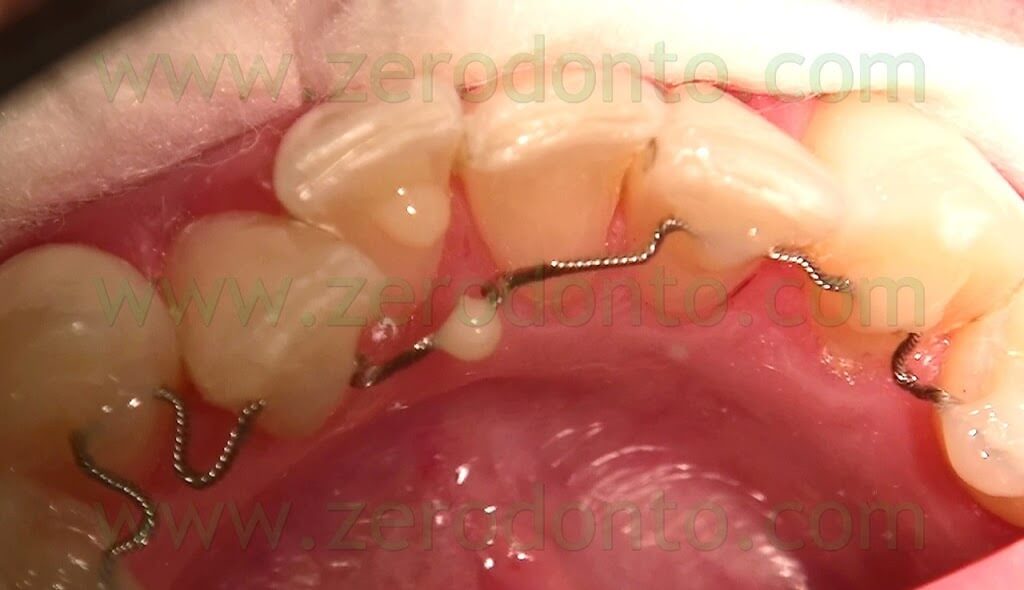
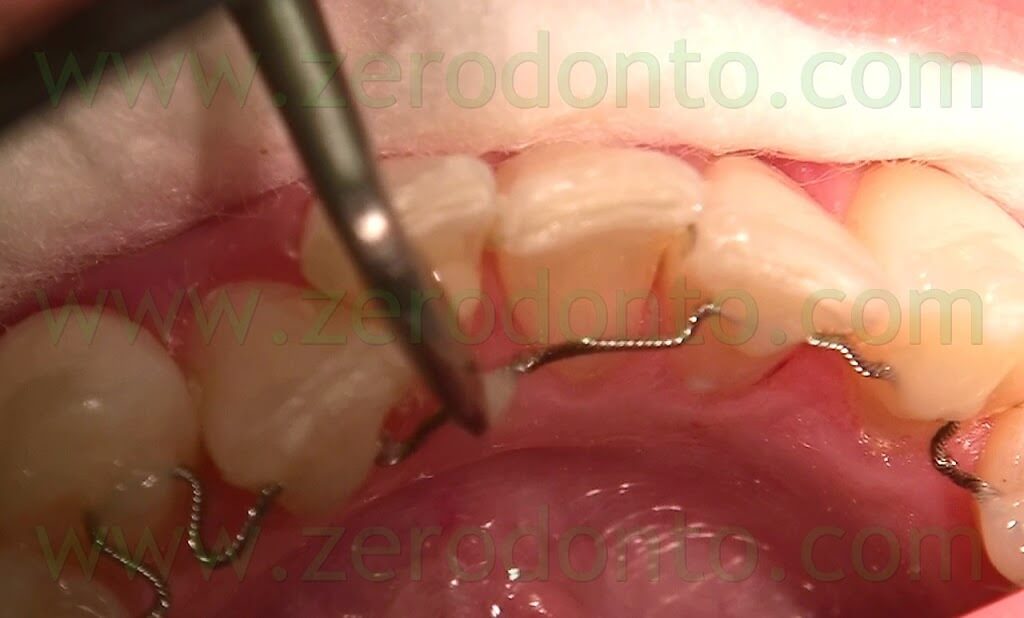
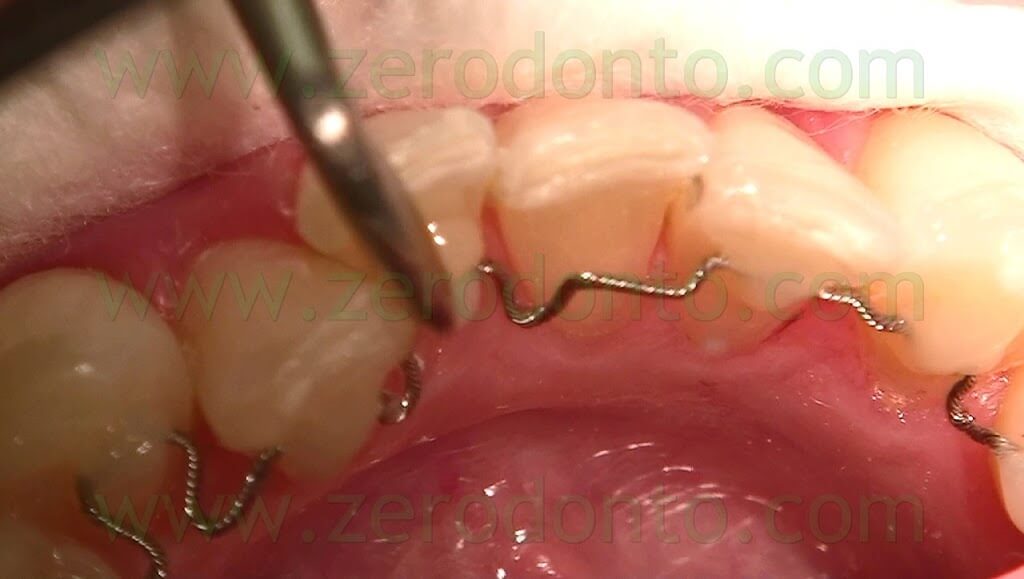
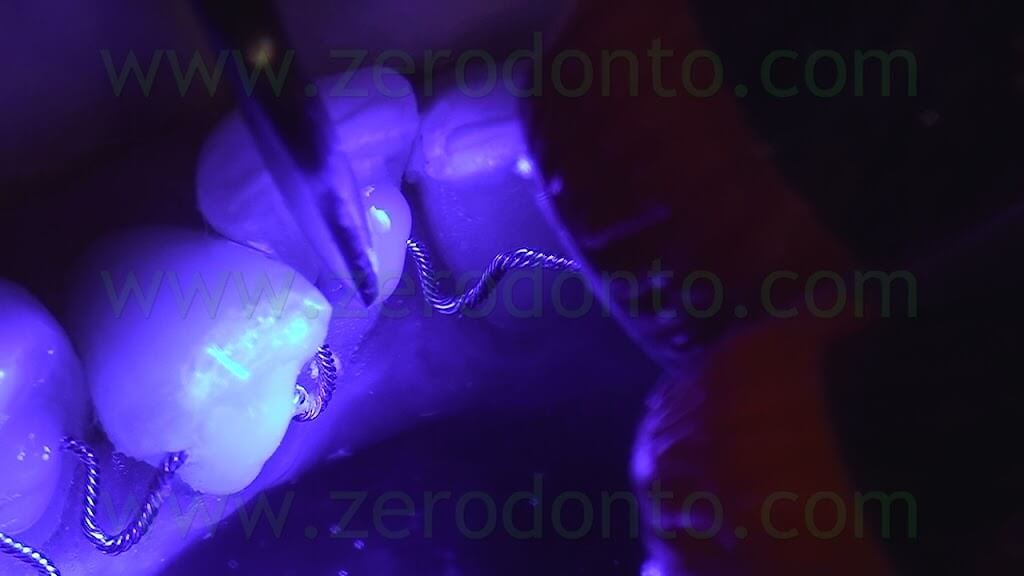
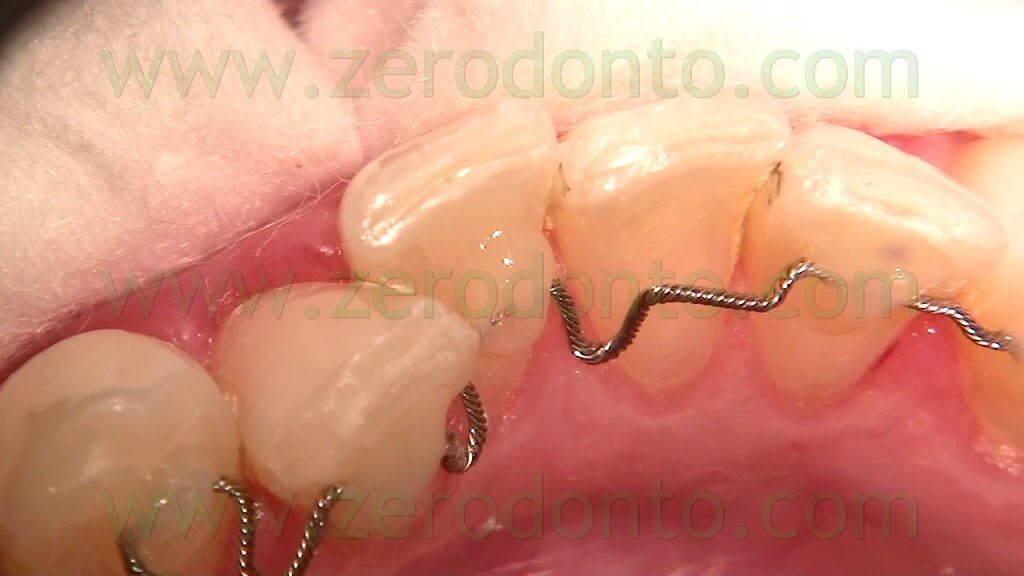
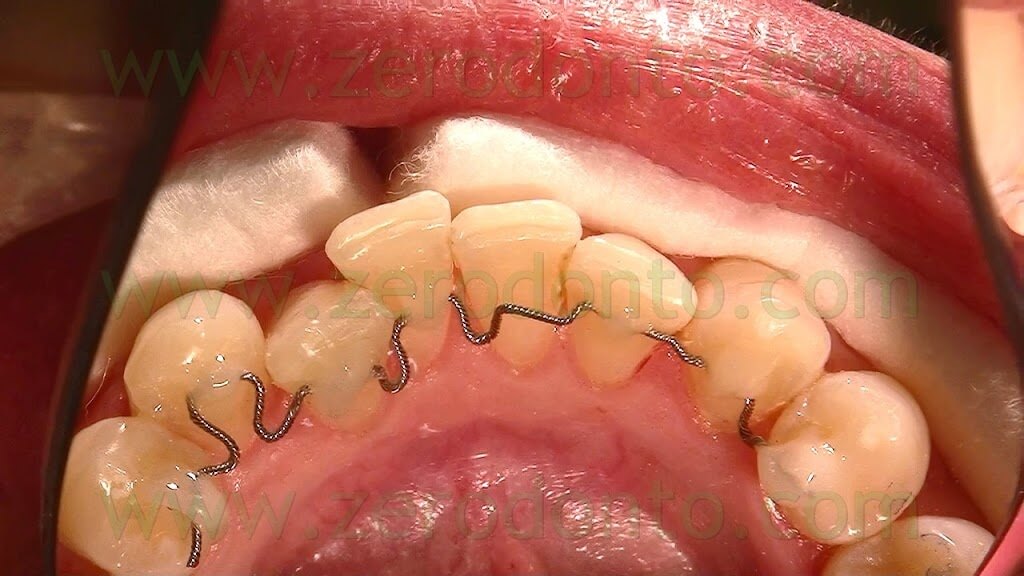
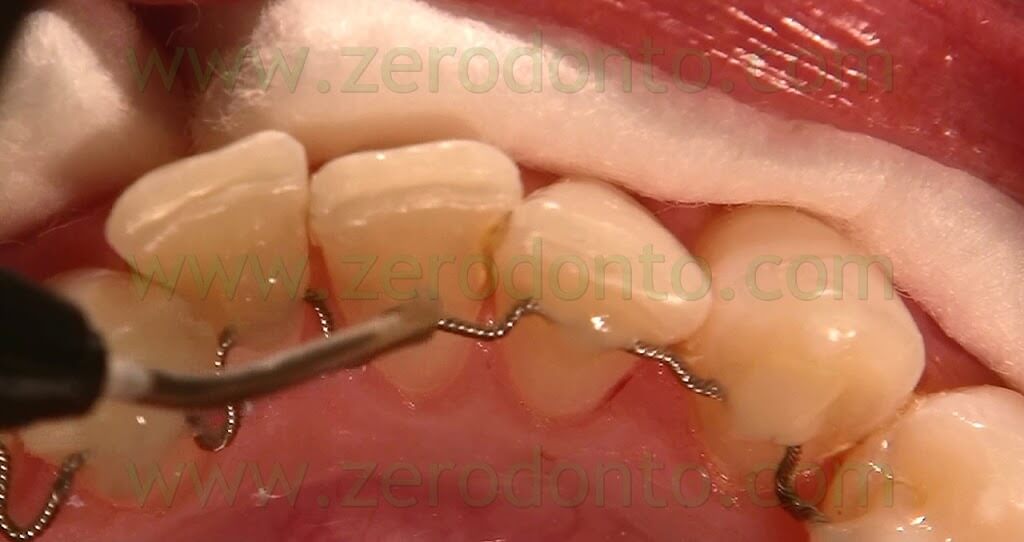
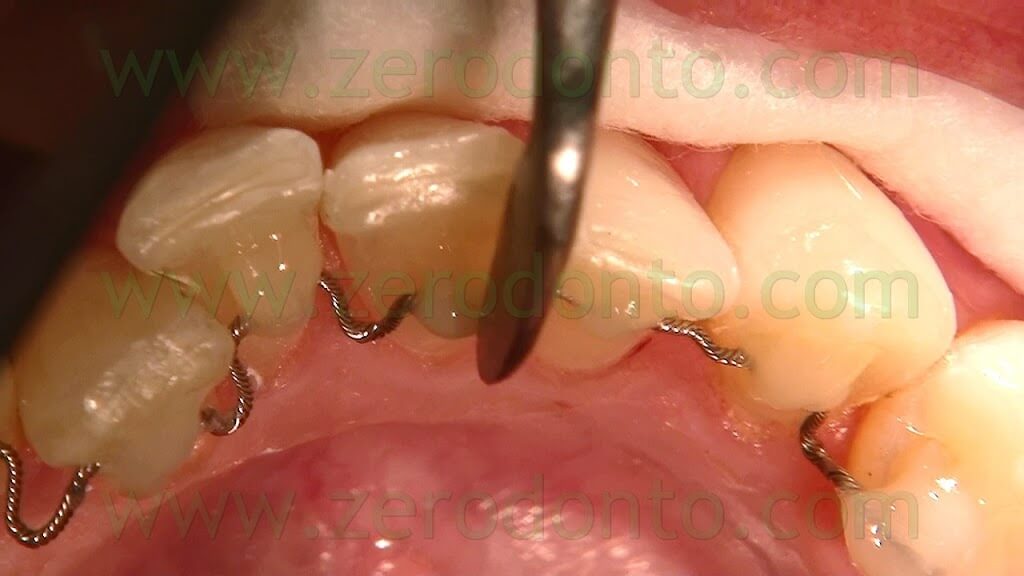
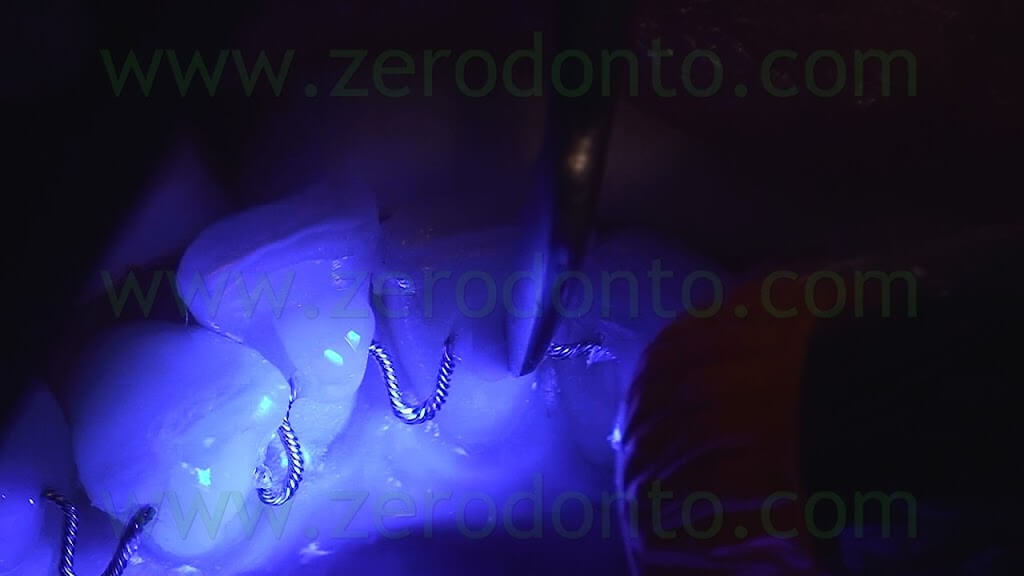
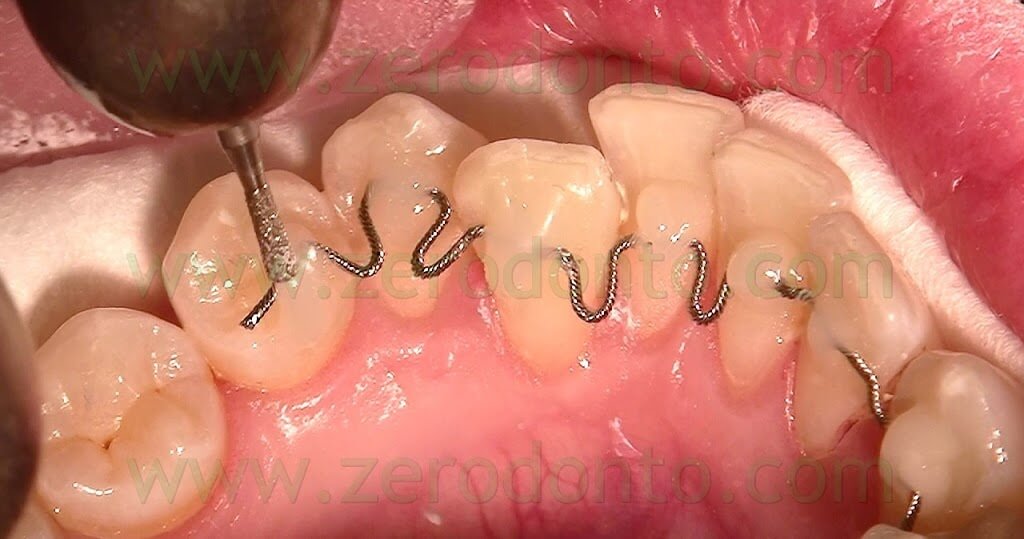
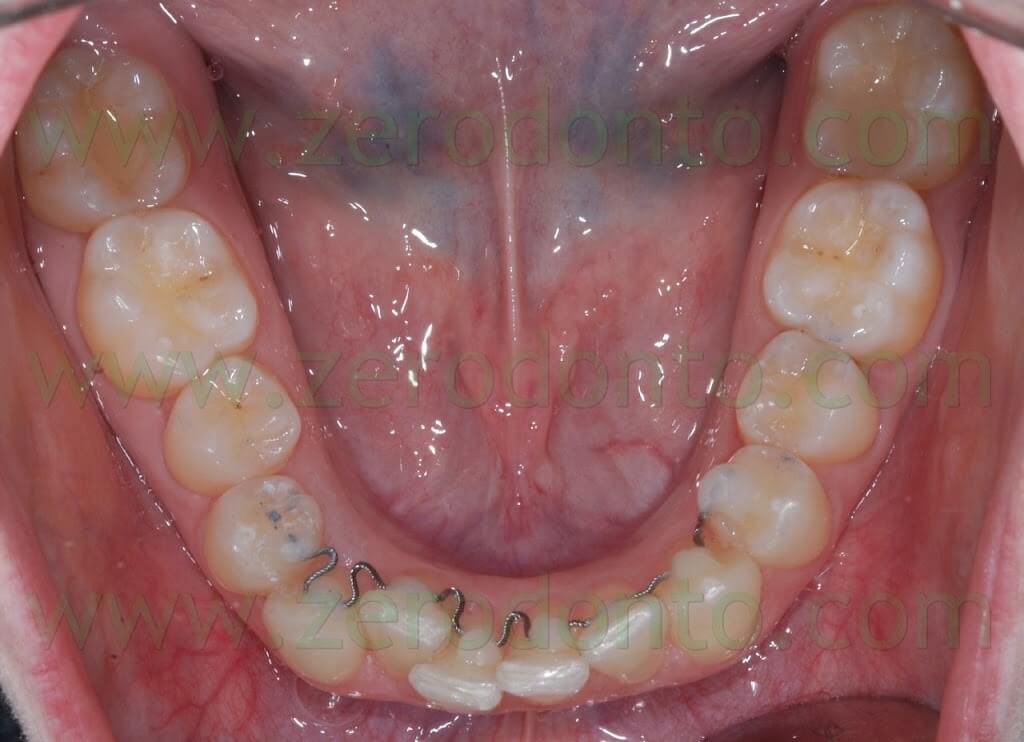
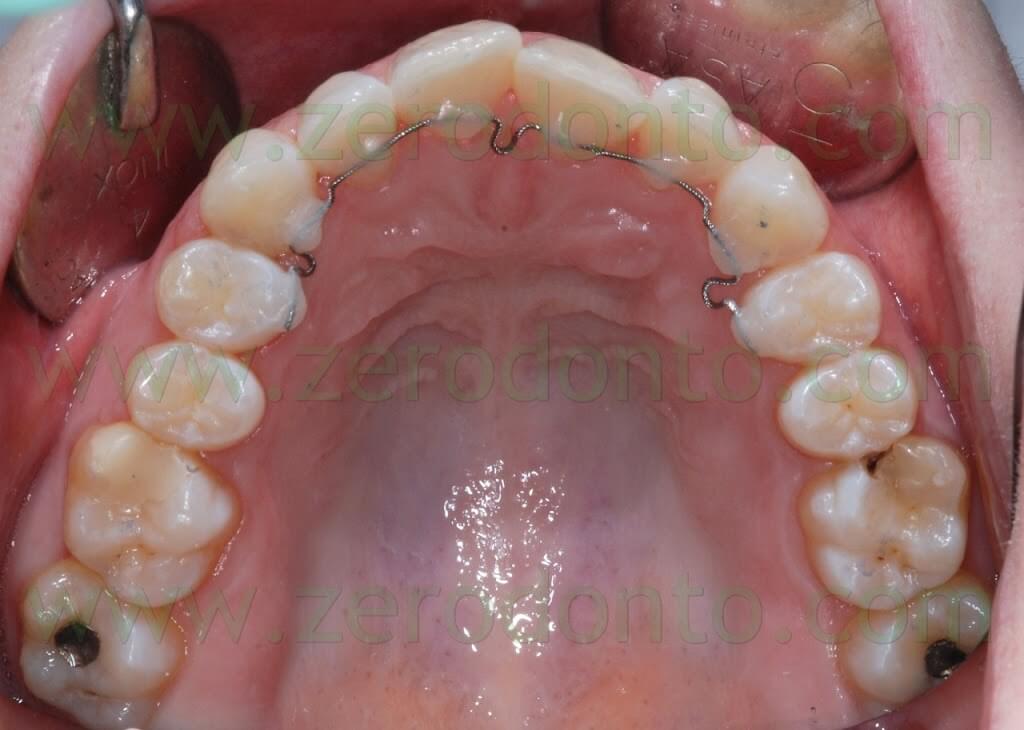
A careful bonding procedure needs:
- to keep the horizontal plane of the wire;
- to avoid the flowable resin composite goes down into the gingival sulcus and in the interdental spaces;
- to cover the wire at least of 1-1,5 mm of flowable resin composite;
- to follow a precise bonding sequence, for example starting from the tooth nearer to the wire.
After the upper and lower wires were applied patient was checked every 3-4 weeks. During each appointment the wires were debonded from the teeth that needed the activation, further shaped and bonded again.
The debonding is accomplished thinning the composite by means of a low-speed diamond bur under water irrigation and using a dental explorer to detach the wire. To attach again the wire it needs to apply the adhesive and the flowable resin composite.
The wires were replaced only to introduce different activations or in case of damage.
We can see the crowding reduction in the meanwhile the wires exert their action.

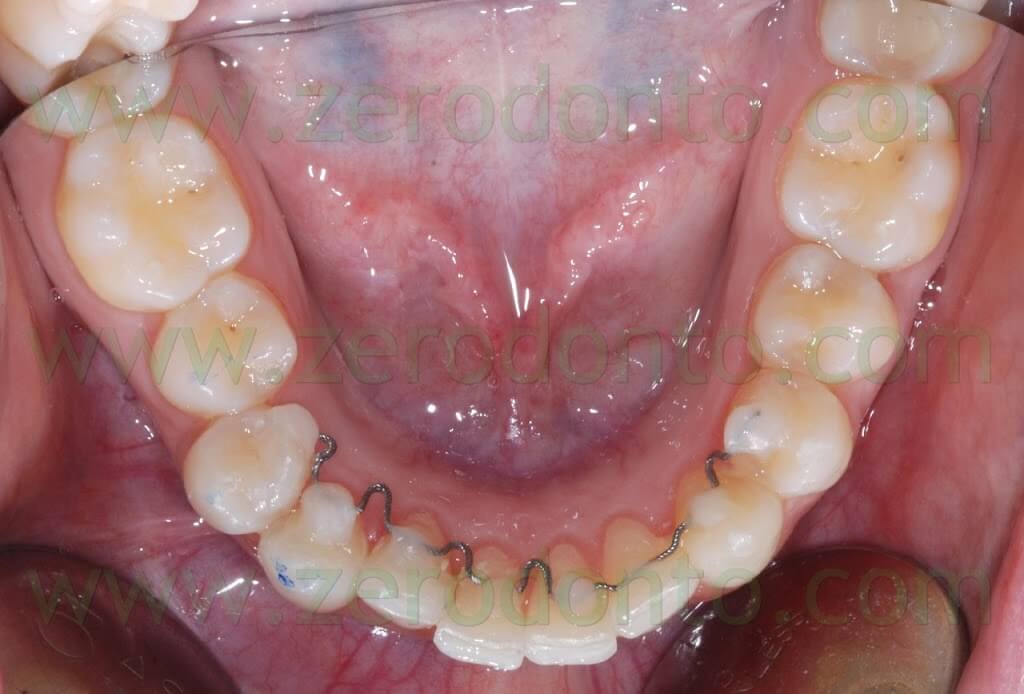
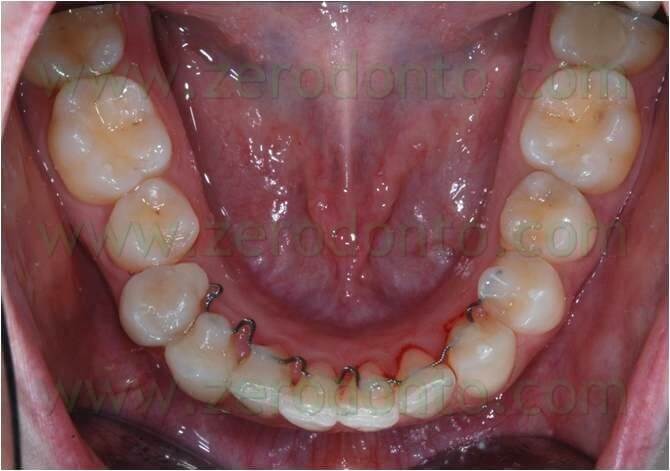
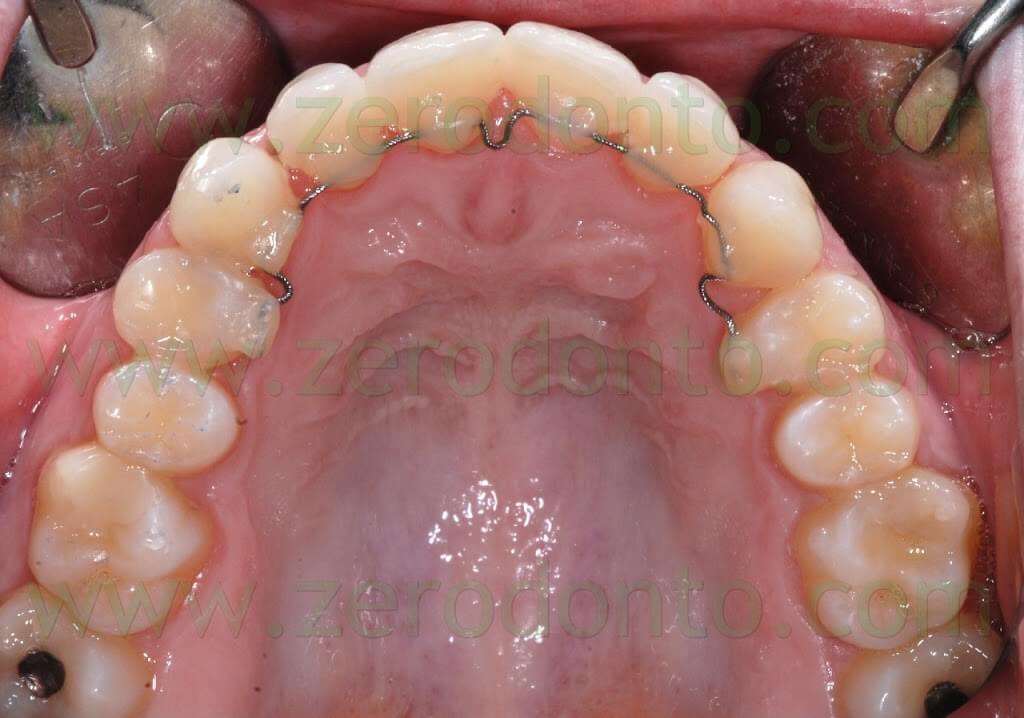
Teeth leveling was achieved after quite 10 months and the active retainers were replaced by passive one.
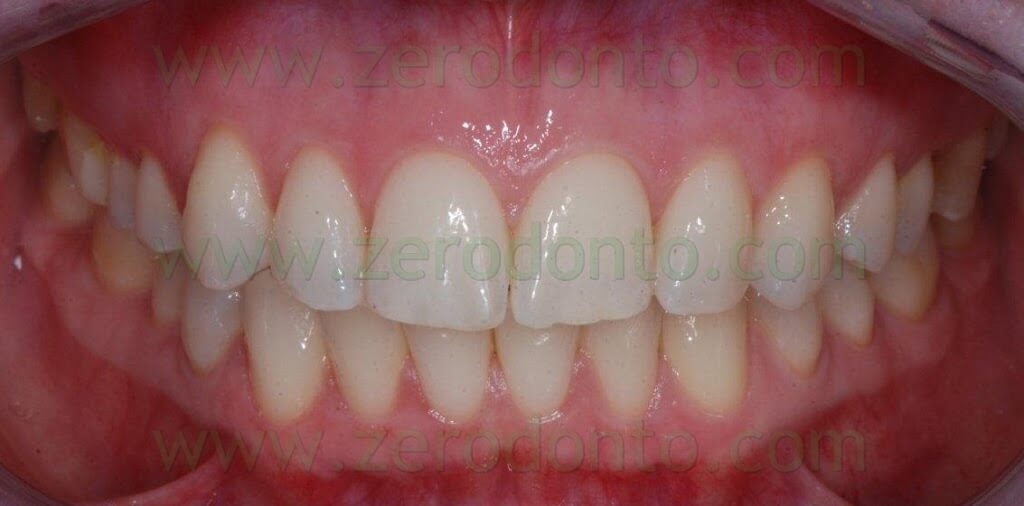
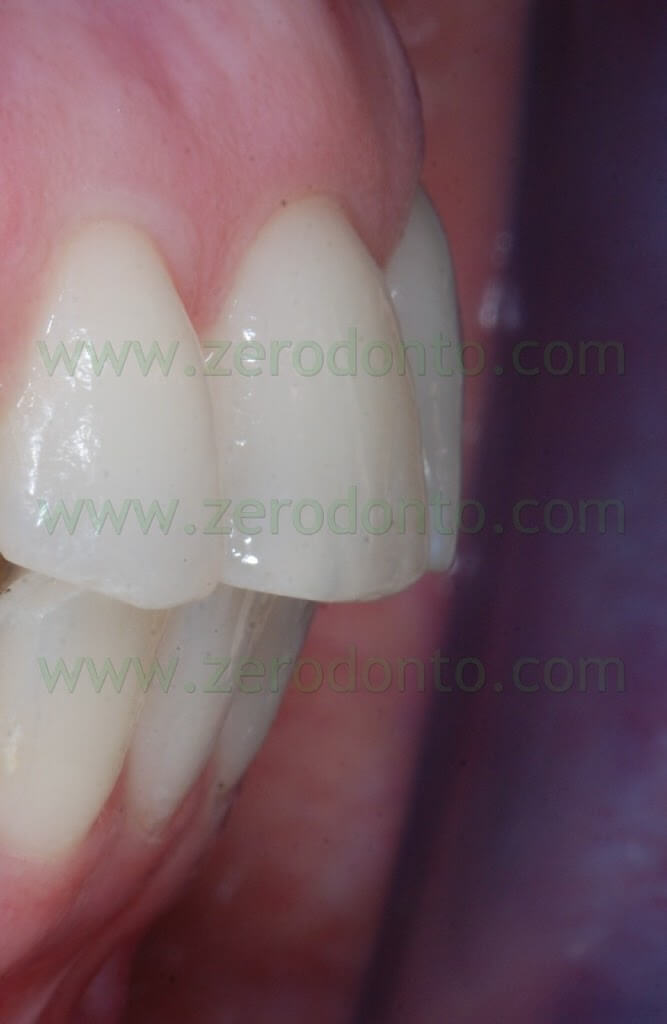
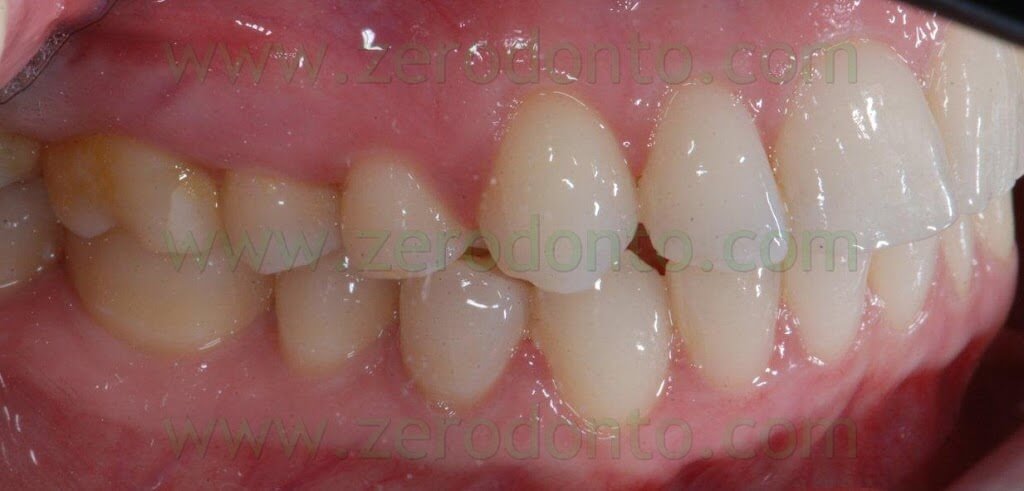
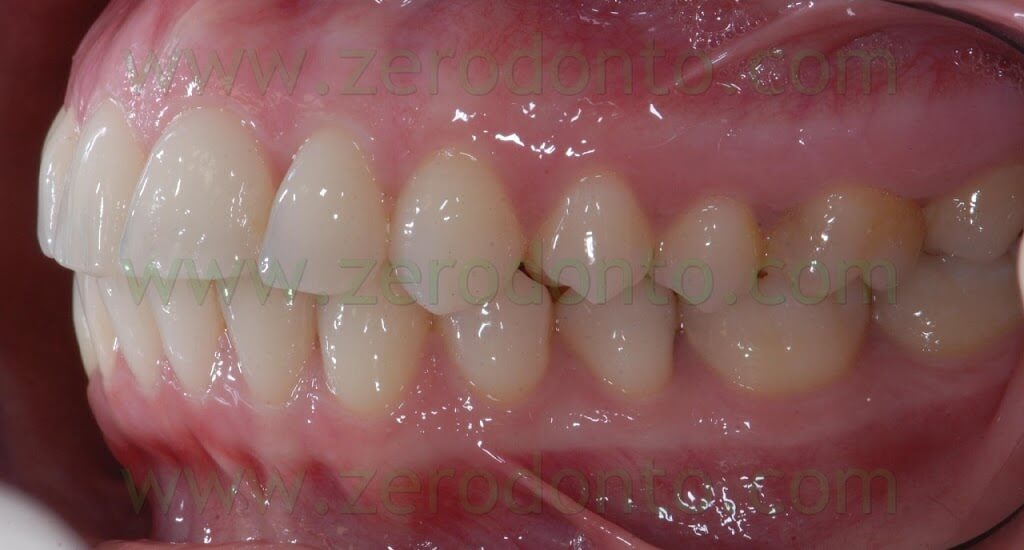
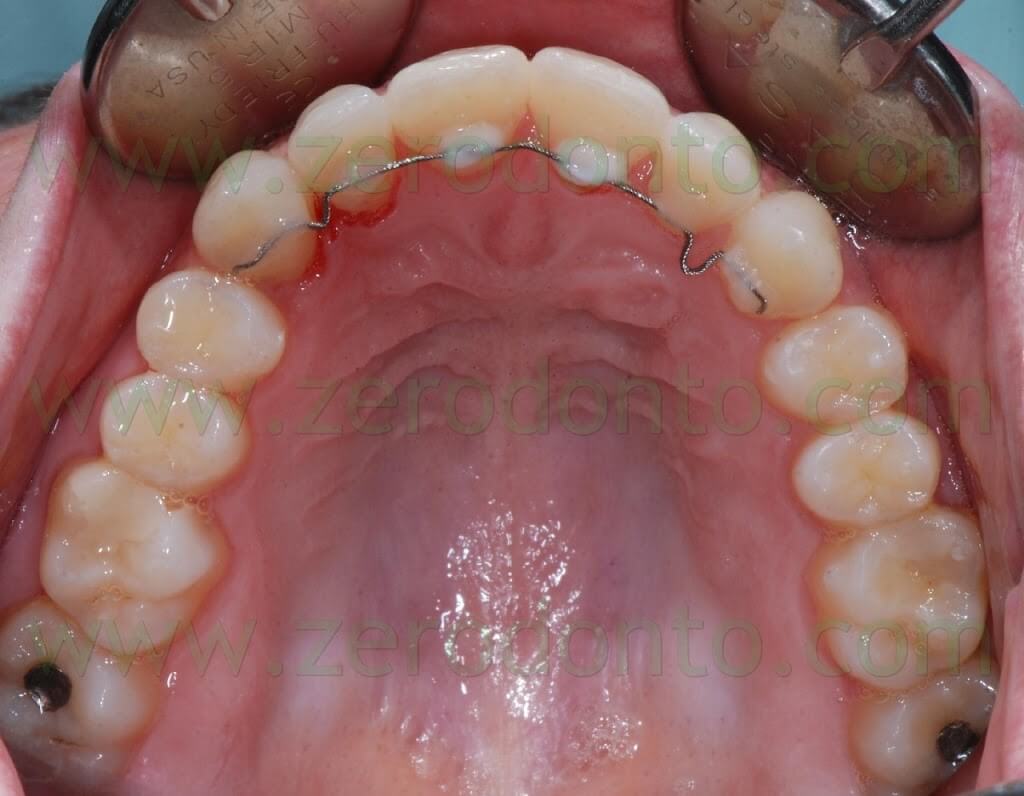
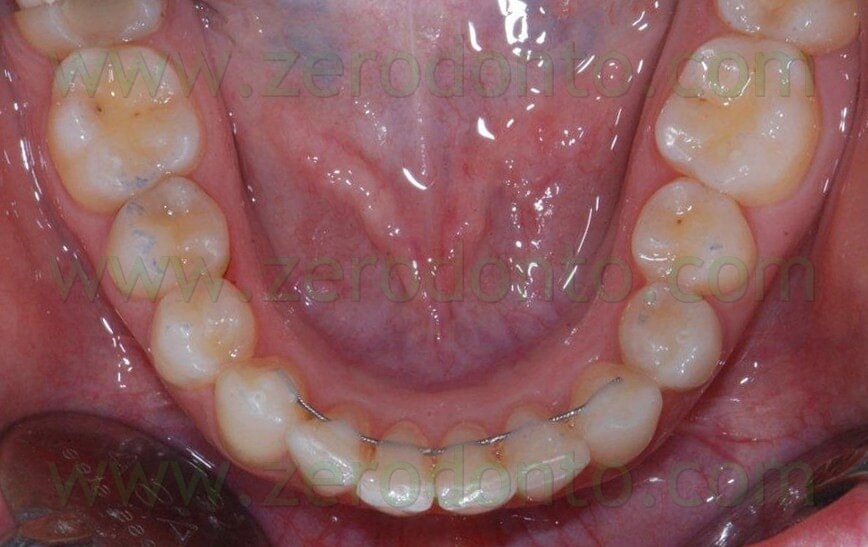
No roots resorption neither buccal proclination of the lower frontal teeth occurred.
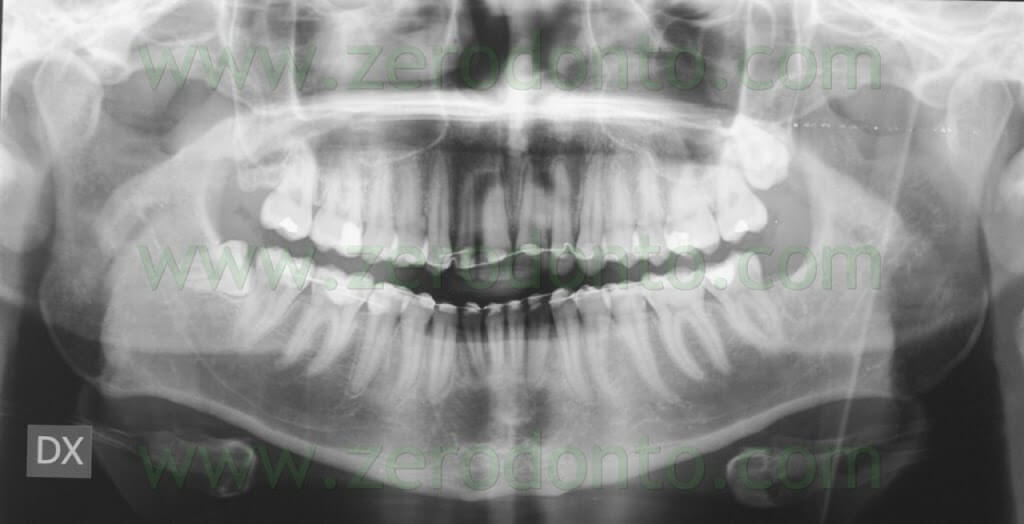
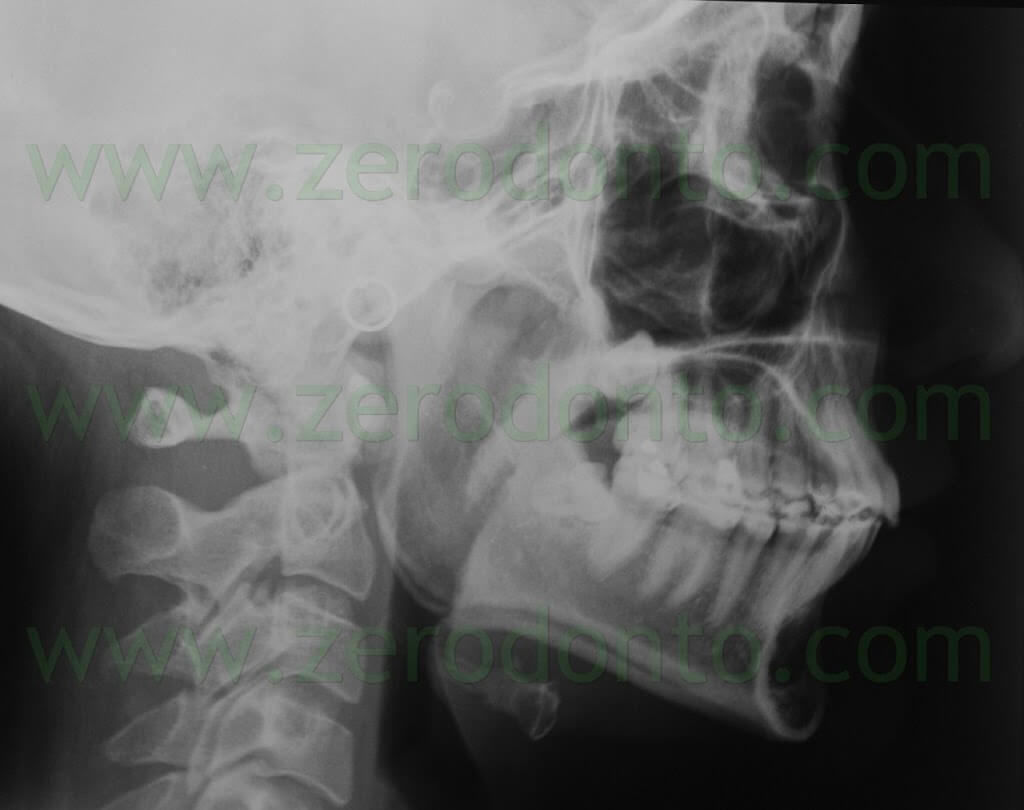
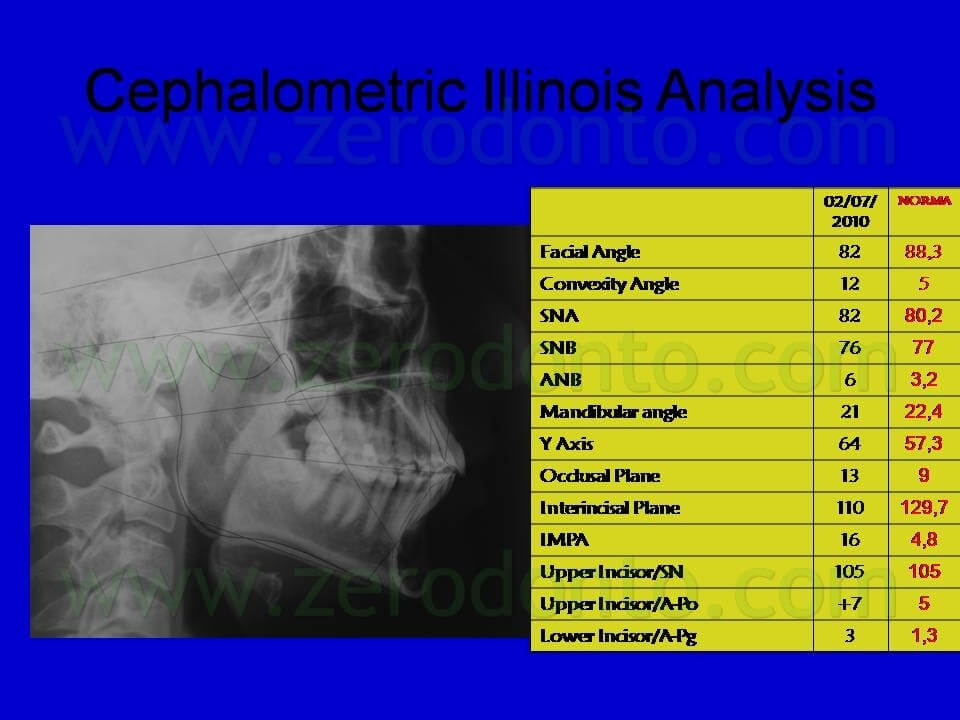
Bibliography:
1. Macchi A, Rania S, Cirulli N. Una proposta per la gestione di disallineamenti anteriori: il mantenitore attivo di contenzione (MAC)”. Mondo Ortodontico, 1999; 5: 389-393.
2. Macchi A, Cirulli N. Fixed active retainer for minor anterior tooth movement. Journal of Clinical Orthodontics, 2000; 34: 48-49.
3. Liou EJW, Chen LIJ, Huang CS. Nickel-titanium mandibular bonded lingual 3-3 retainer: for permanent retention and solving relapse of mandibular anterior crowding. American Journal of Orthodontics and Dentofacial Orthopedics 2001; 119:443-449.
4. Mariniello A, Cozzolino F. Lingual active retainers to achieve teeth levelling in orthodontics: case series. International Dentistry SA Vol 10 N 5, pag. 24-29, 2008.
For Information:
zerodonto@gmail.com
tel. 0039 081 2451805

